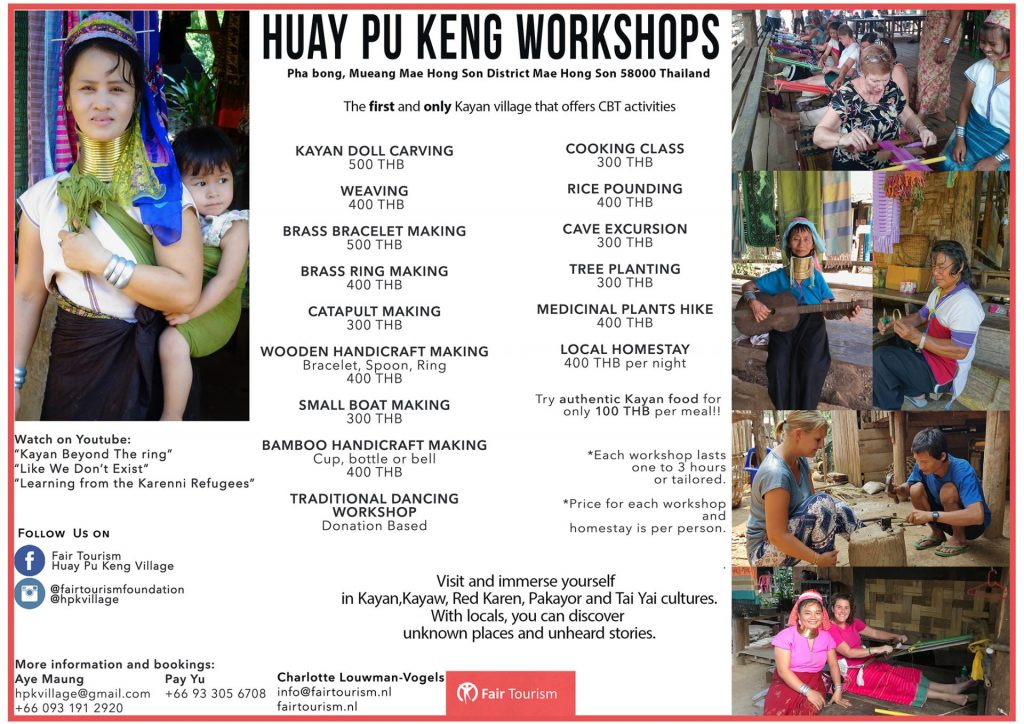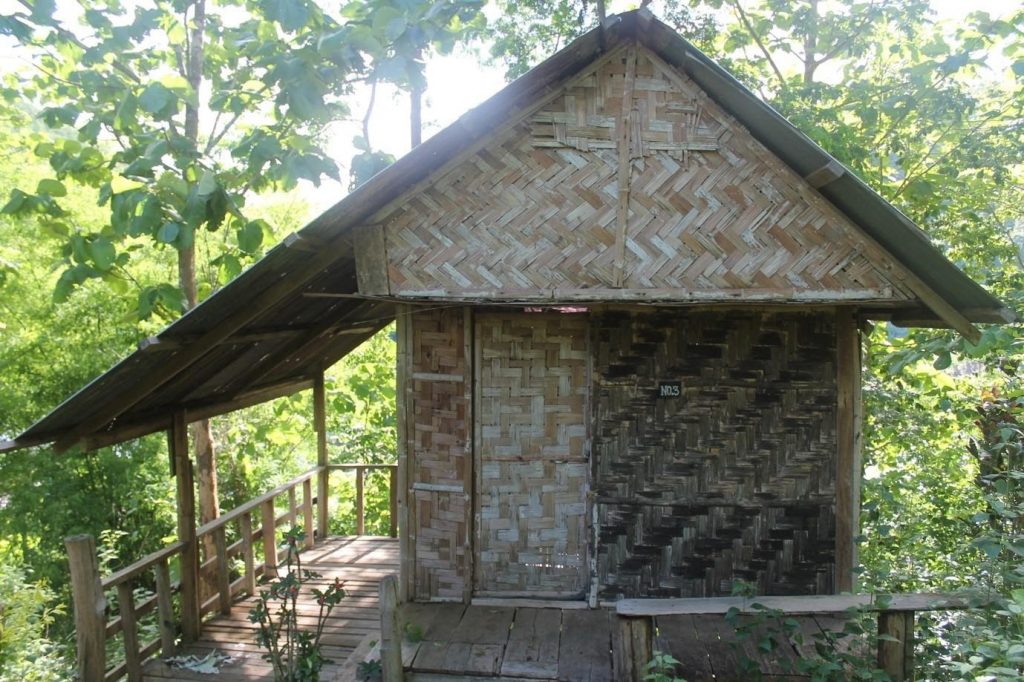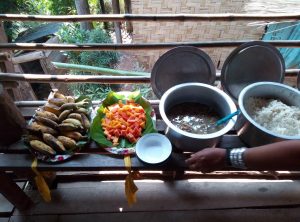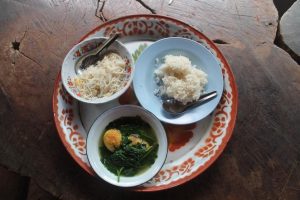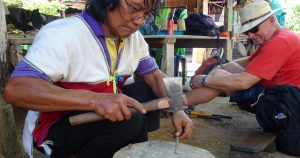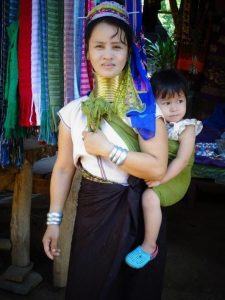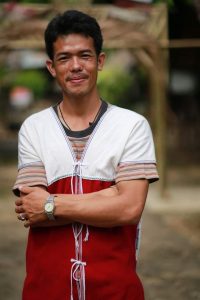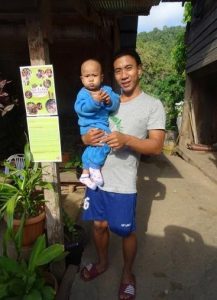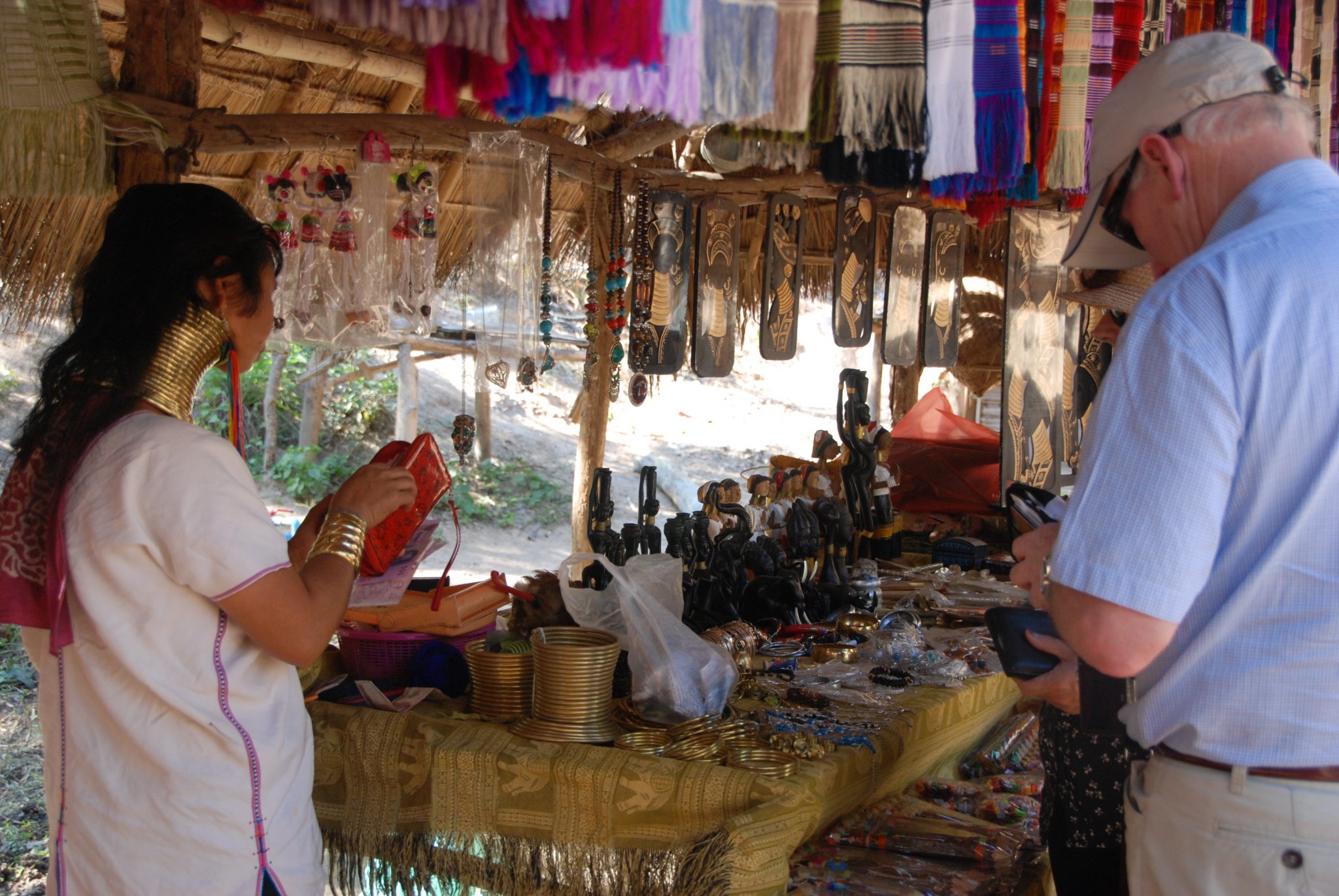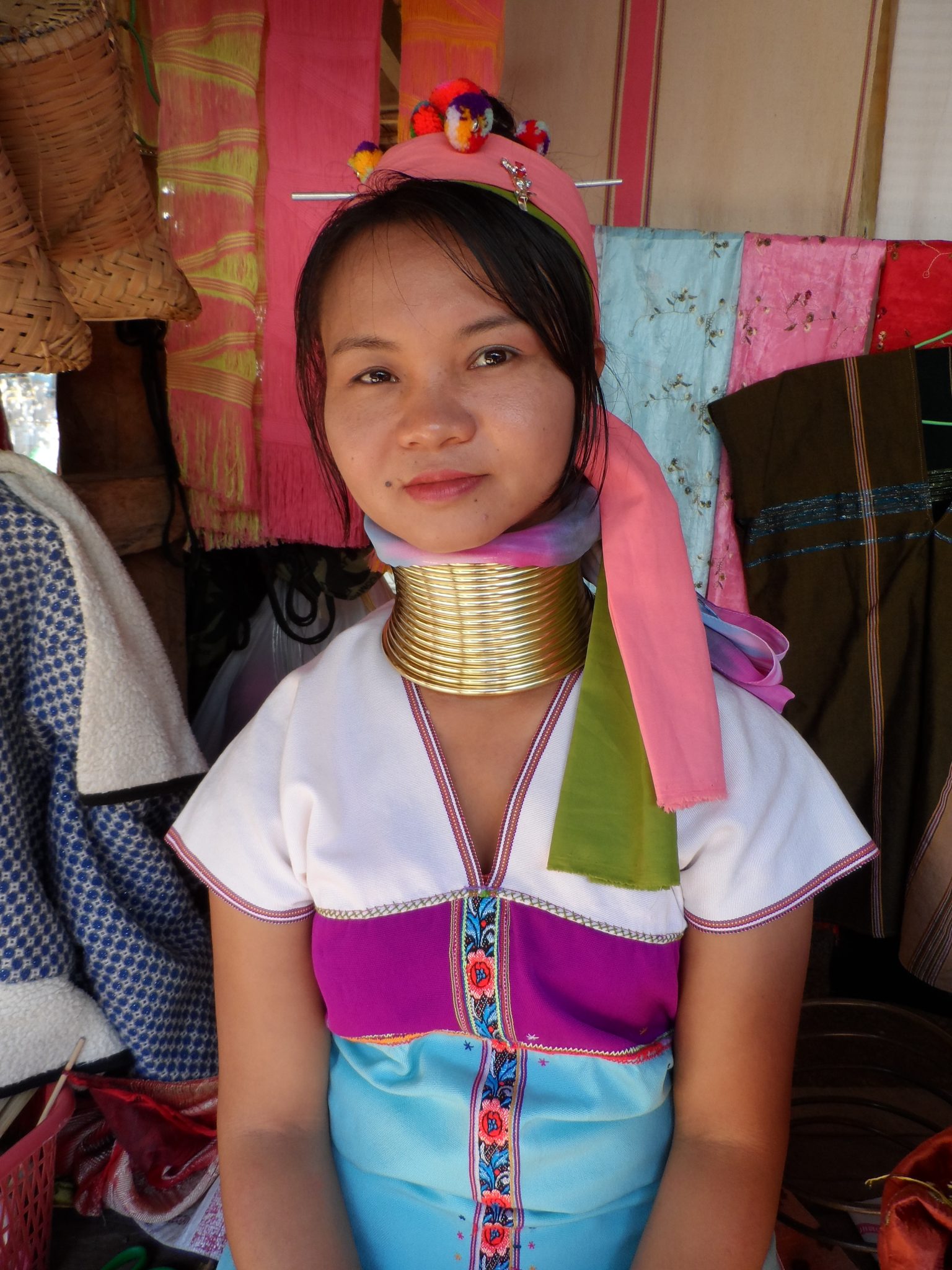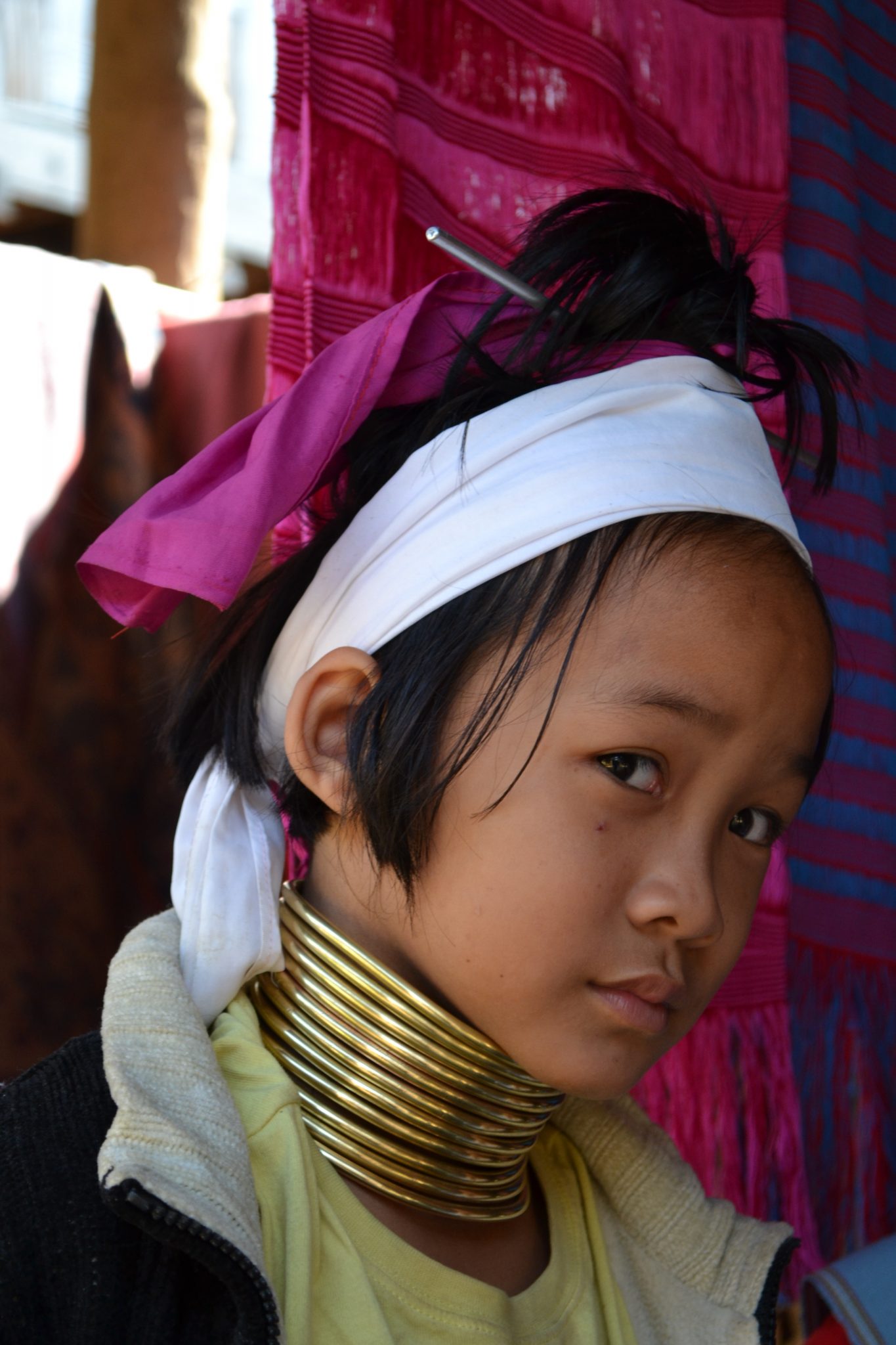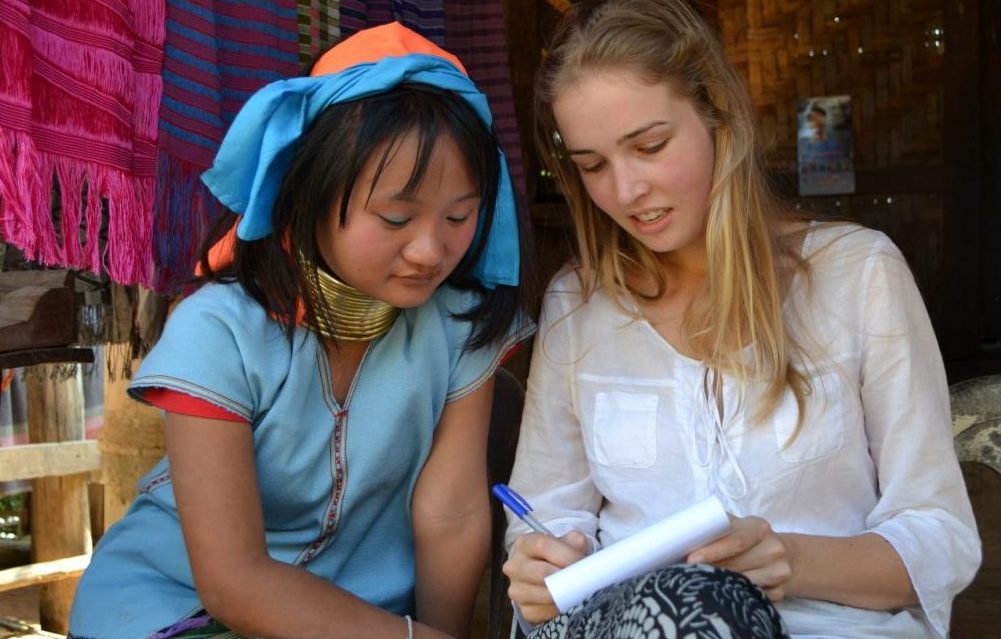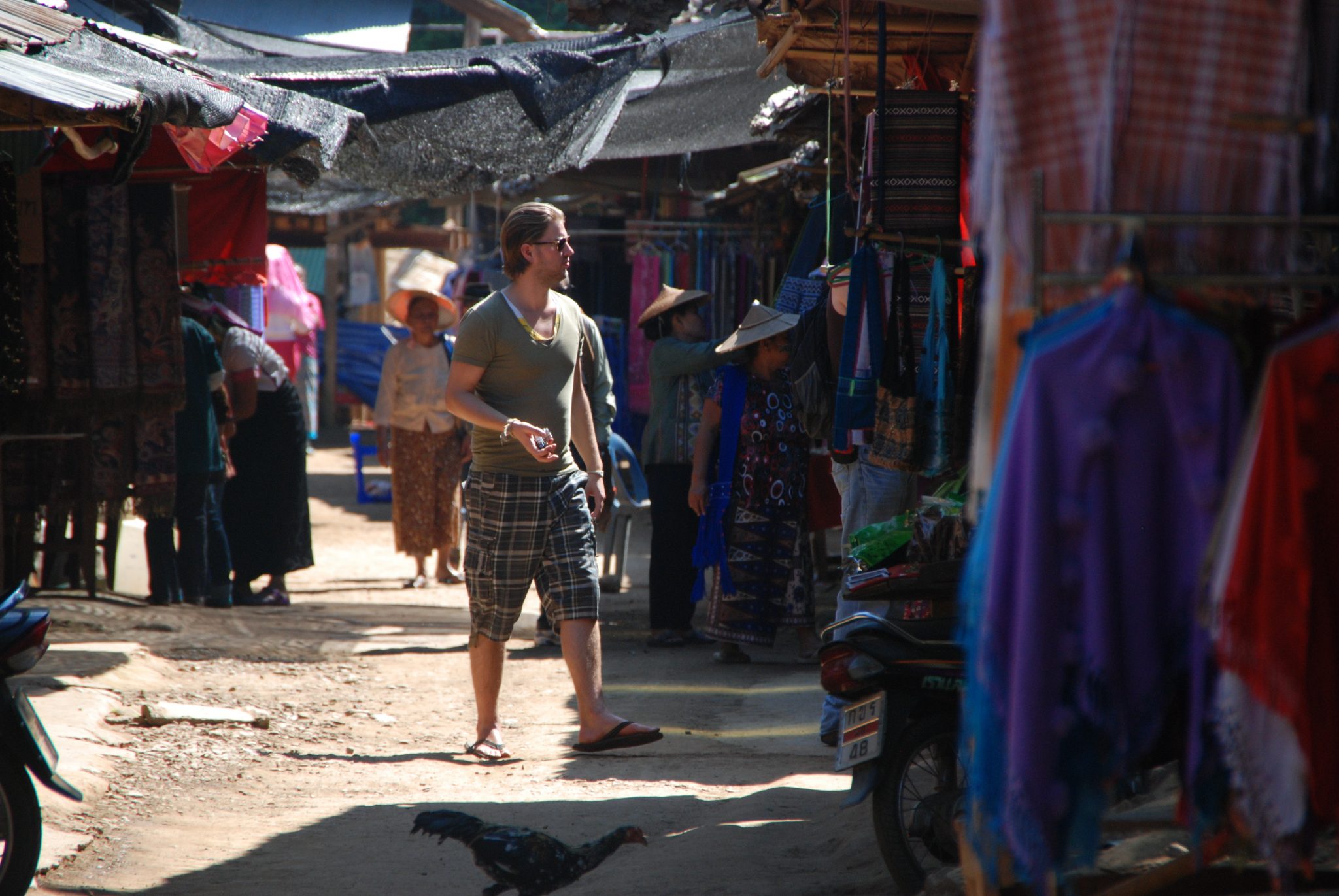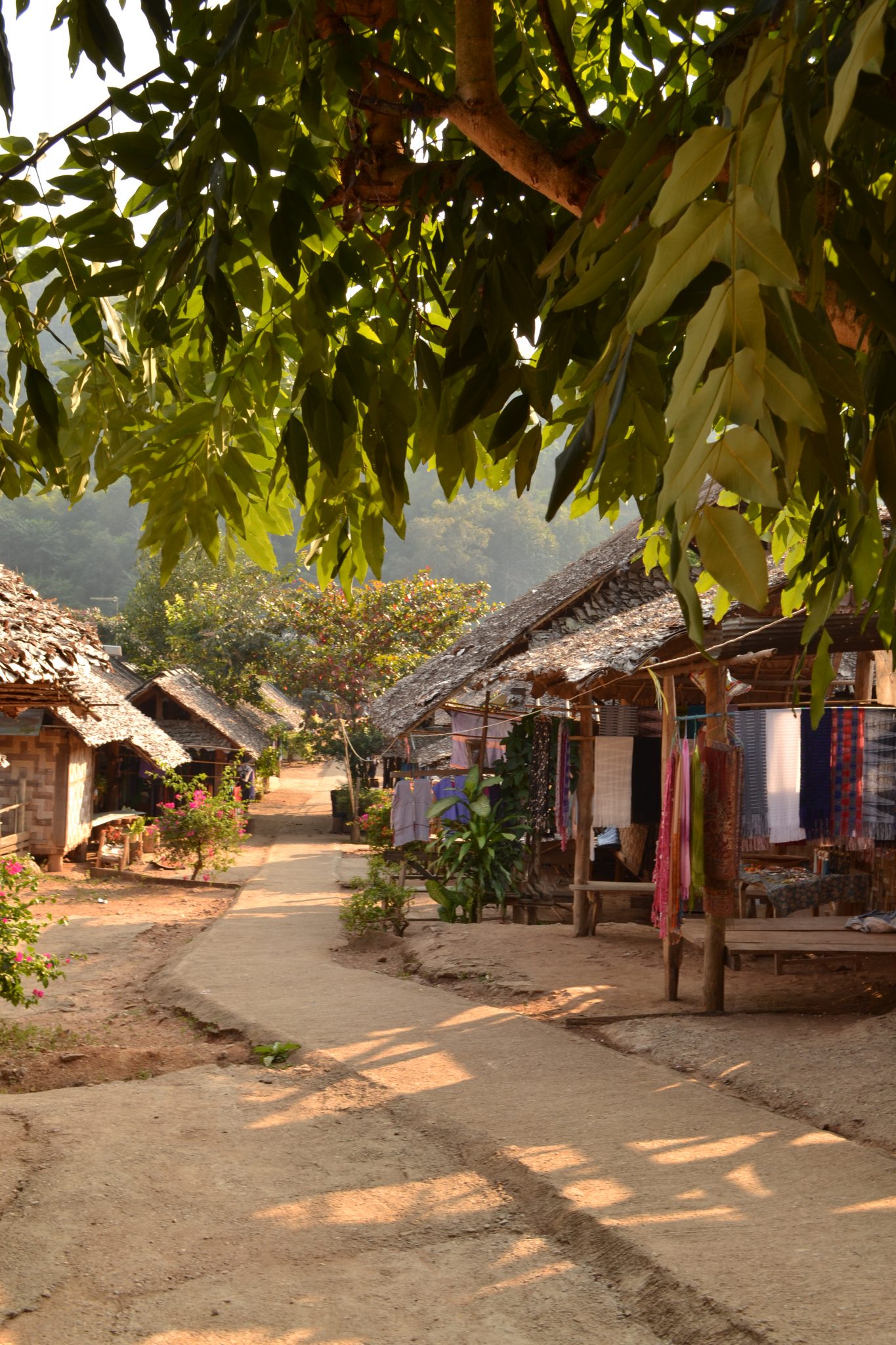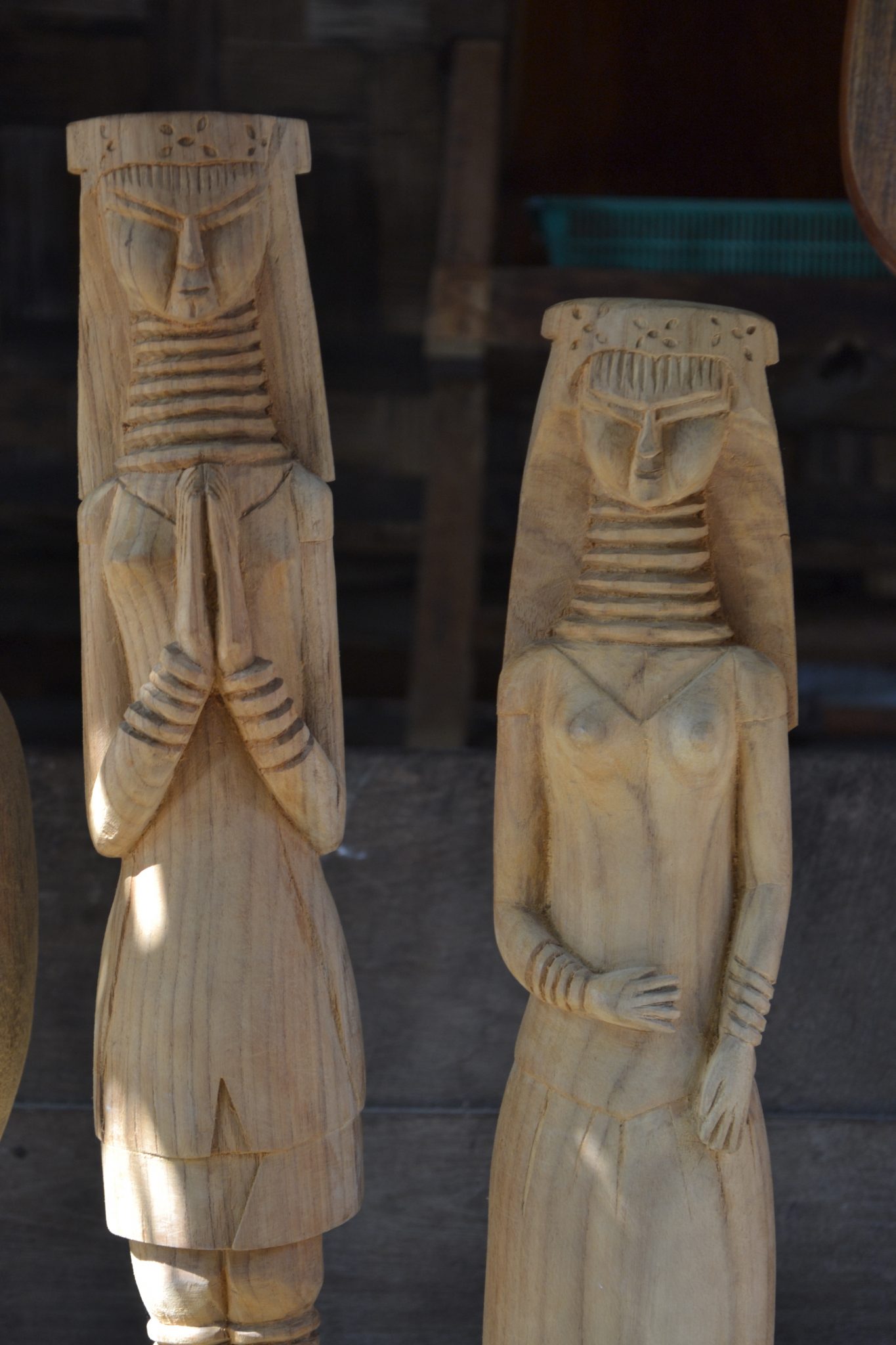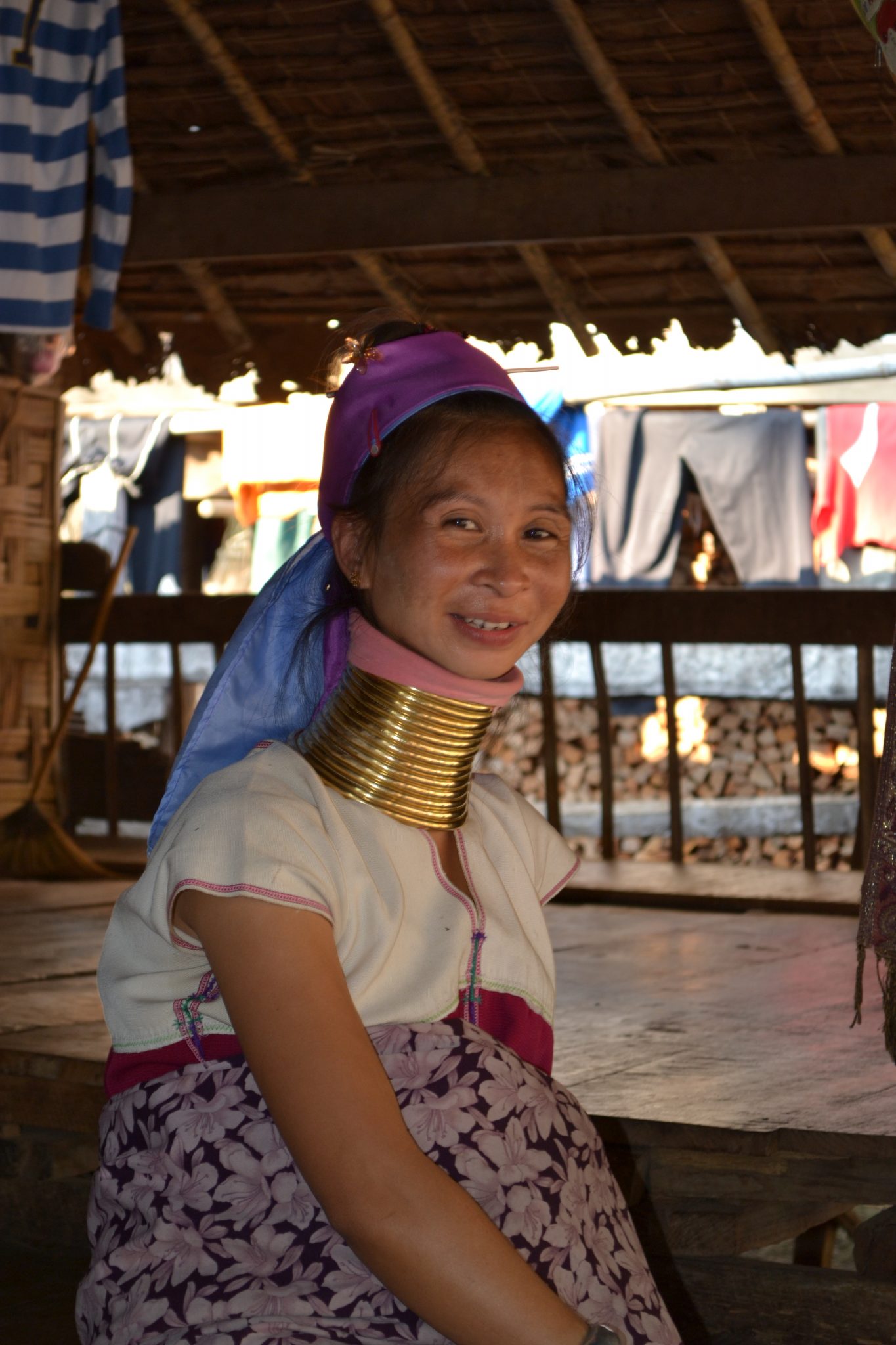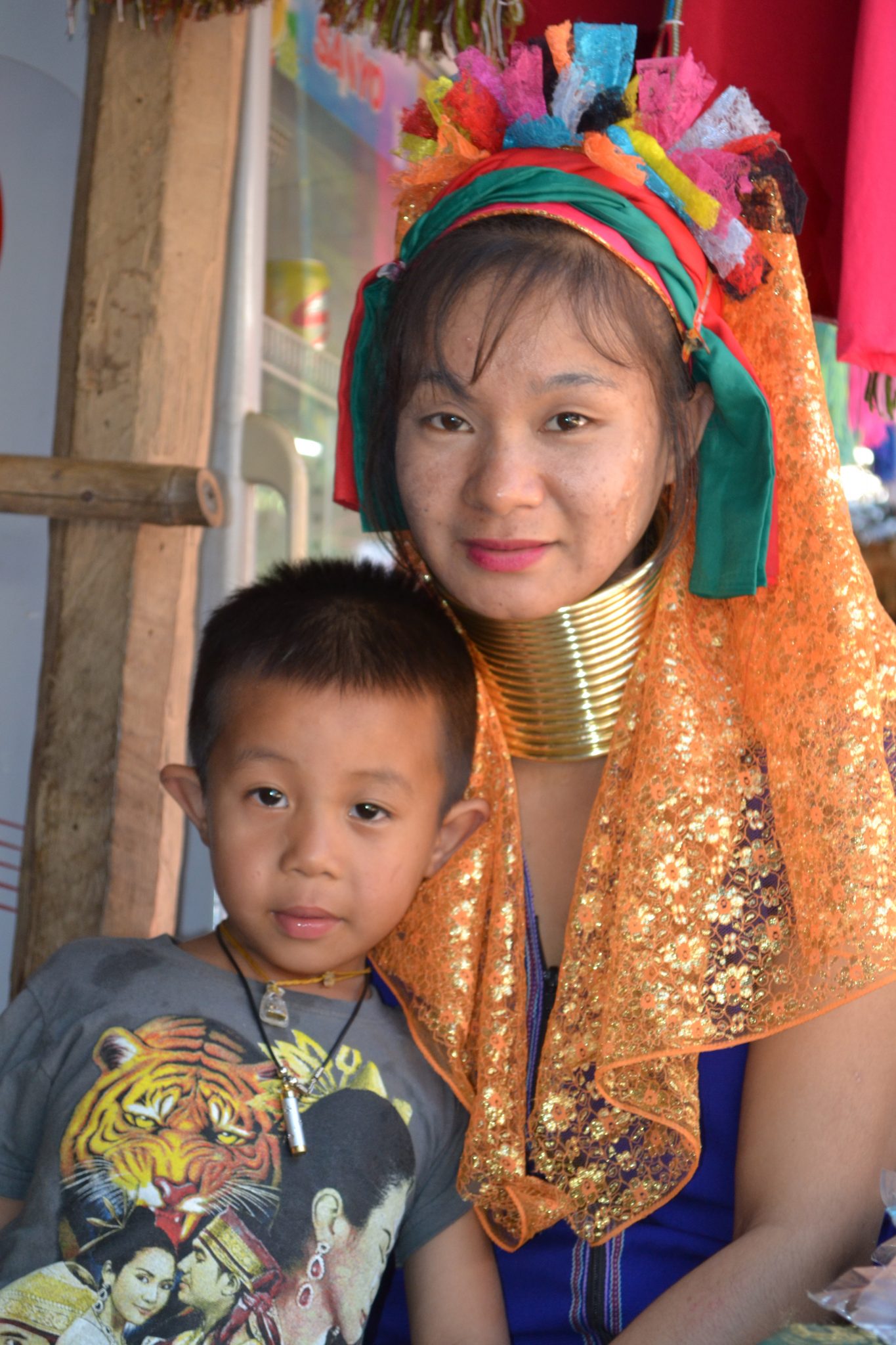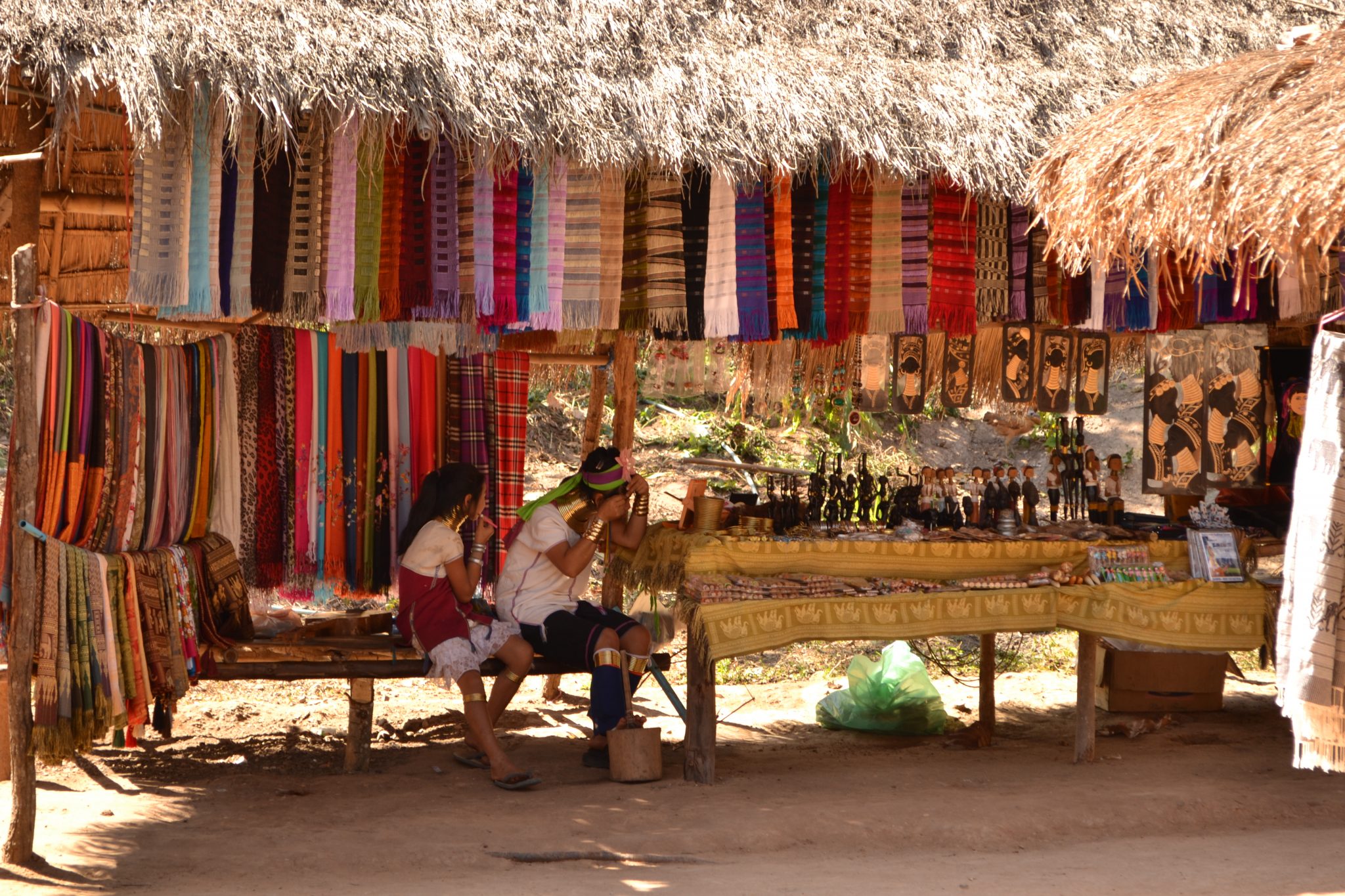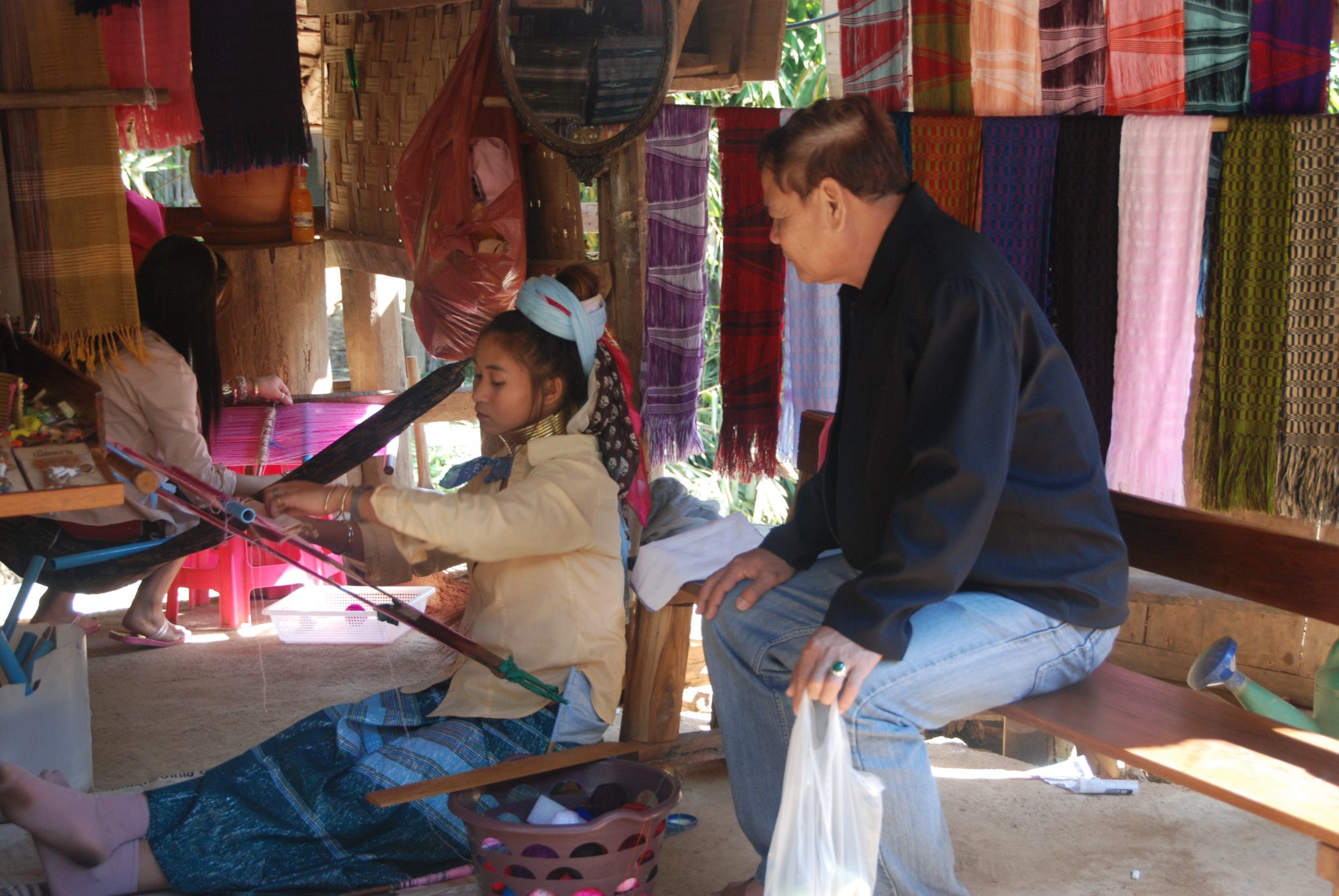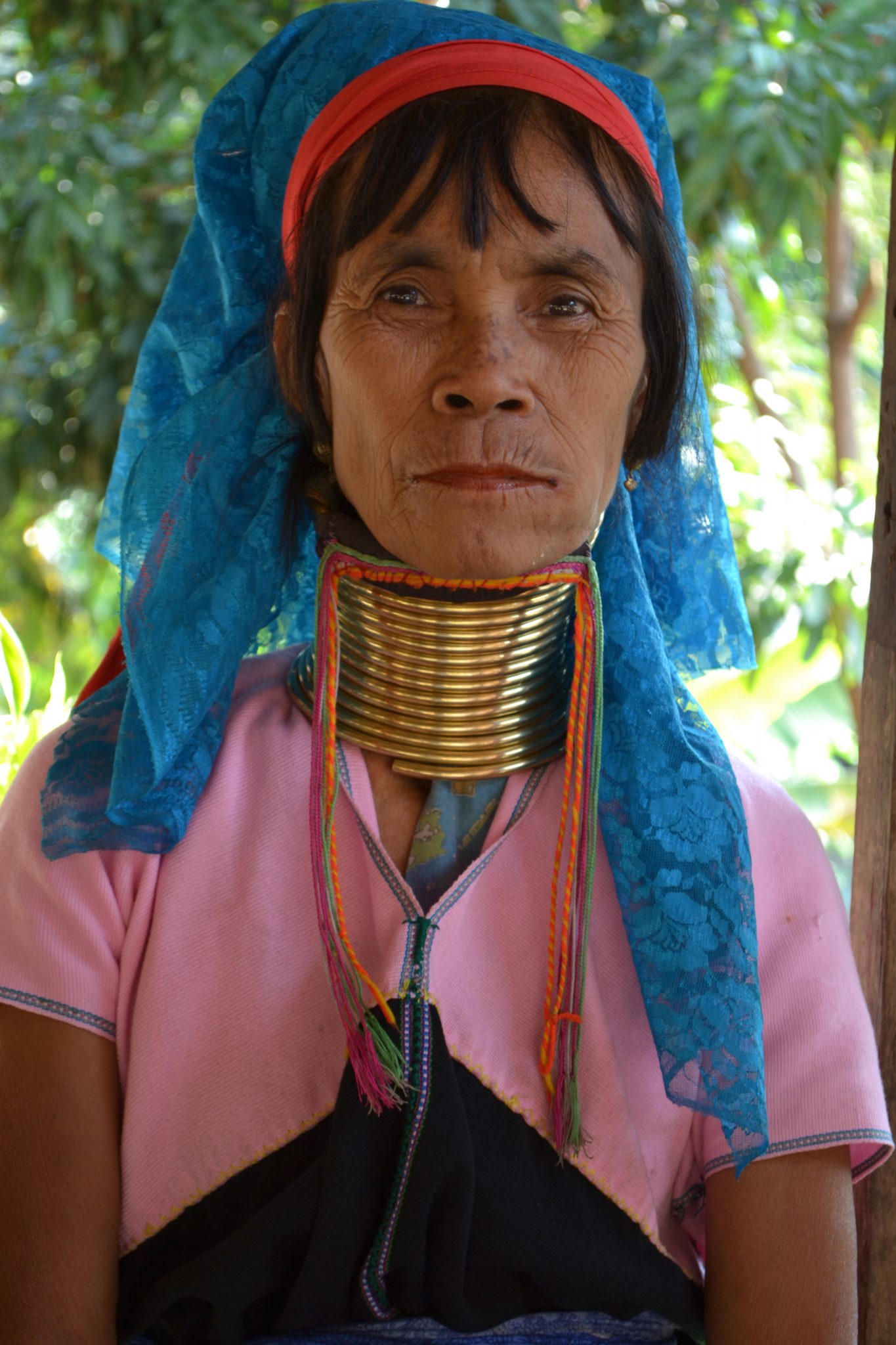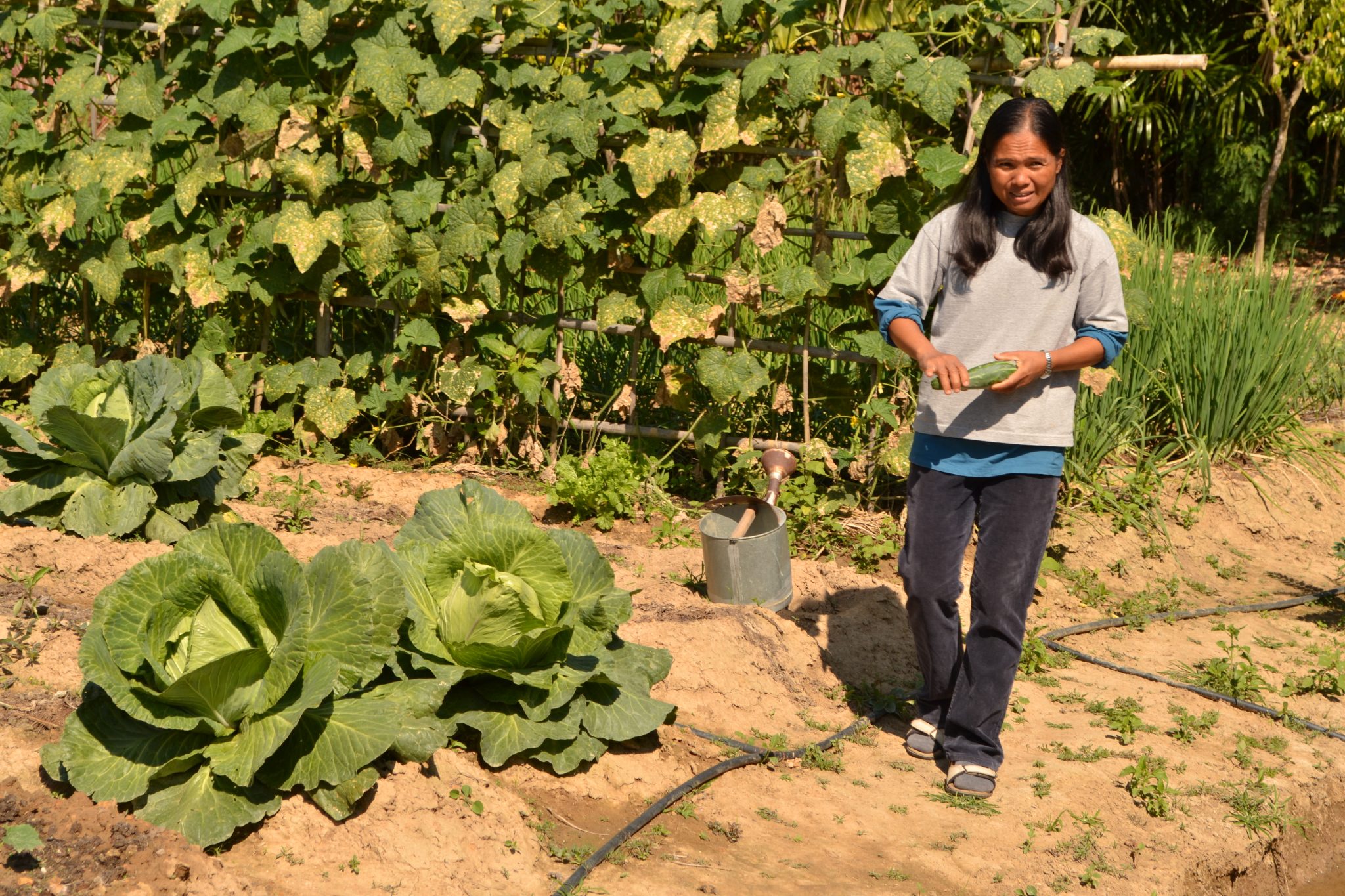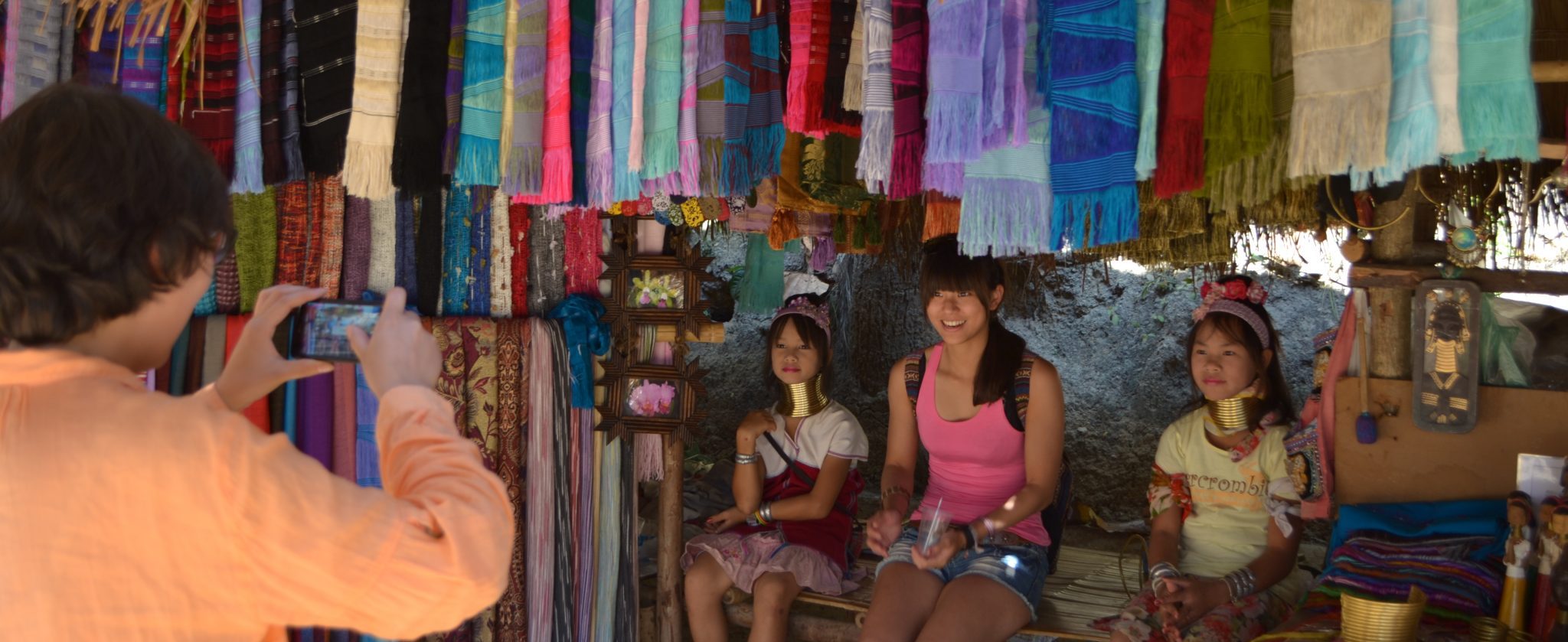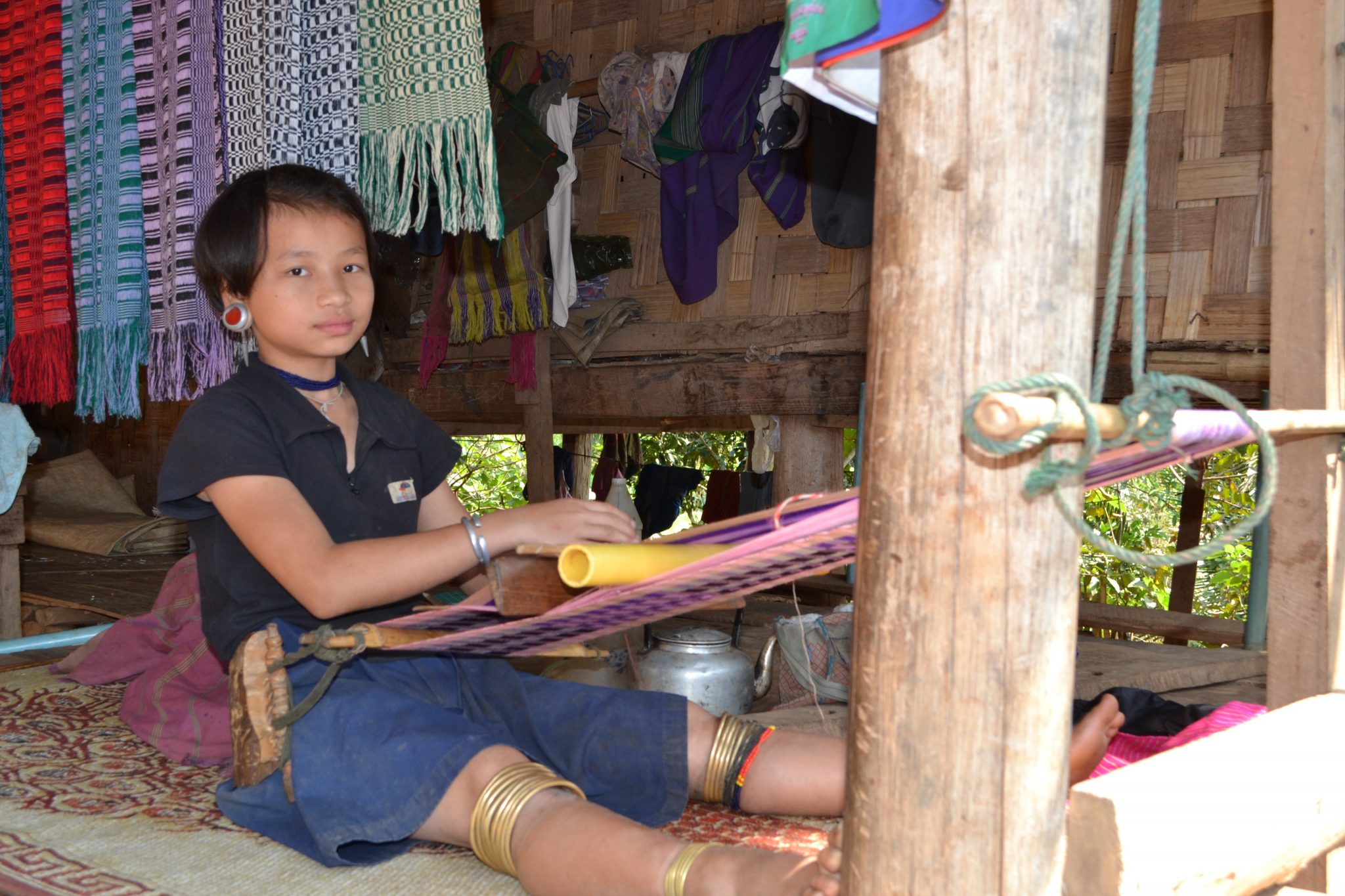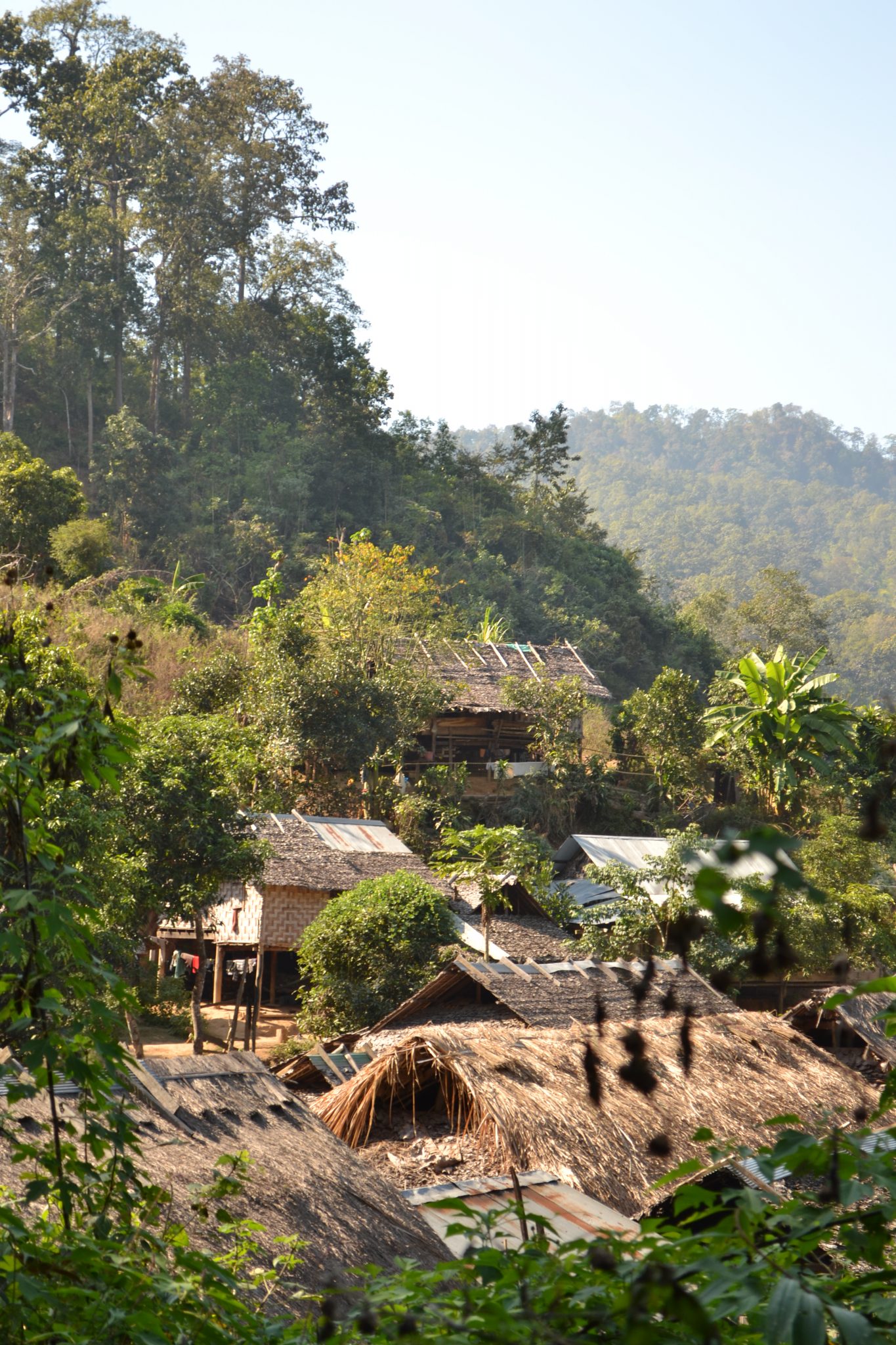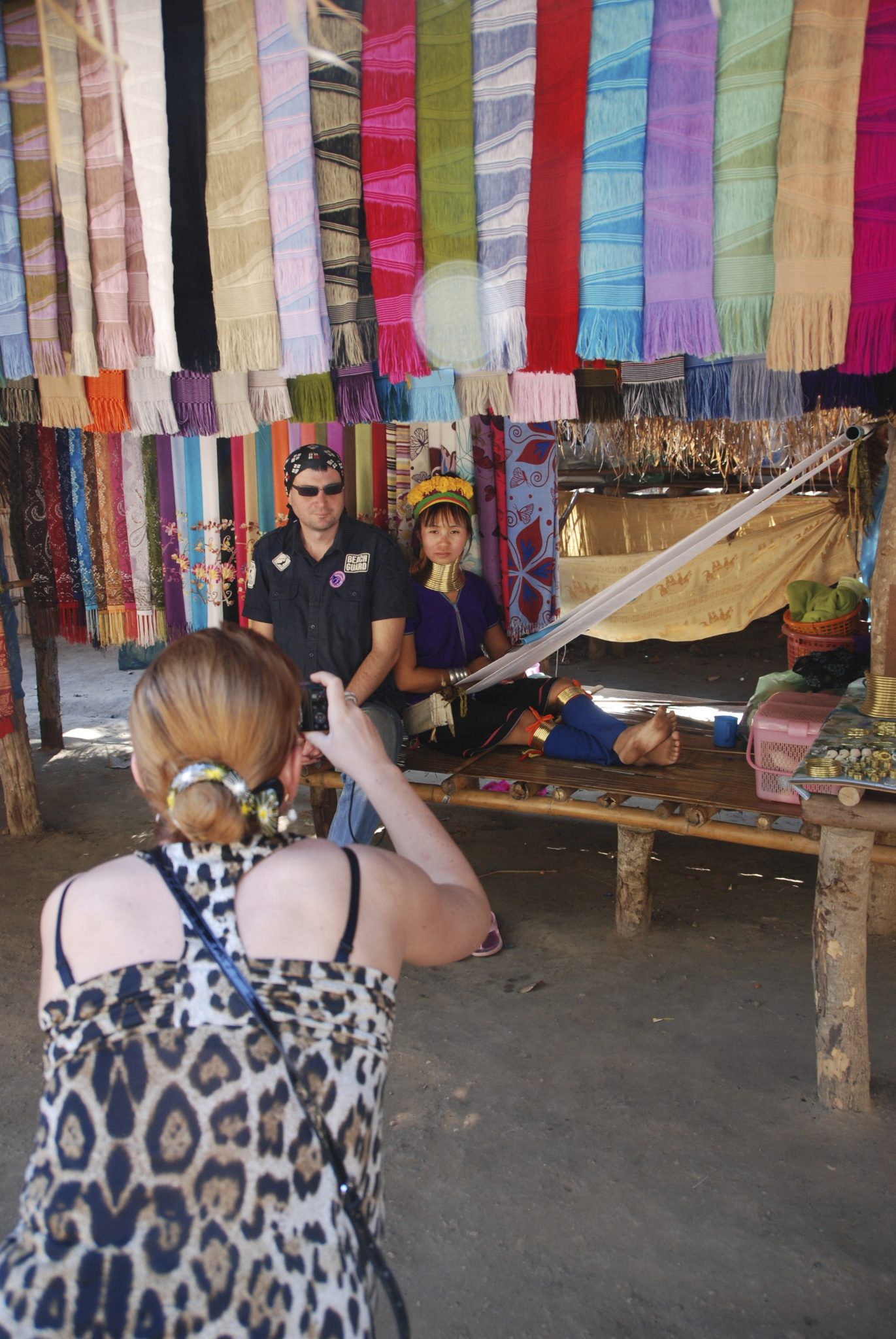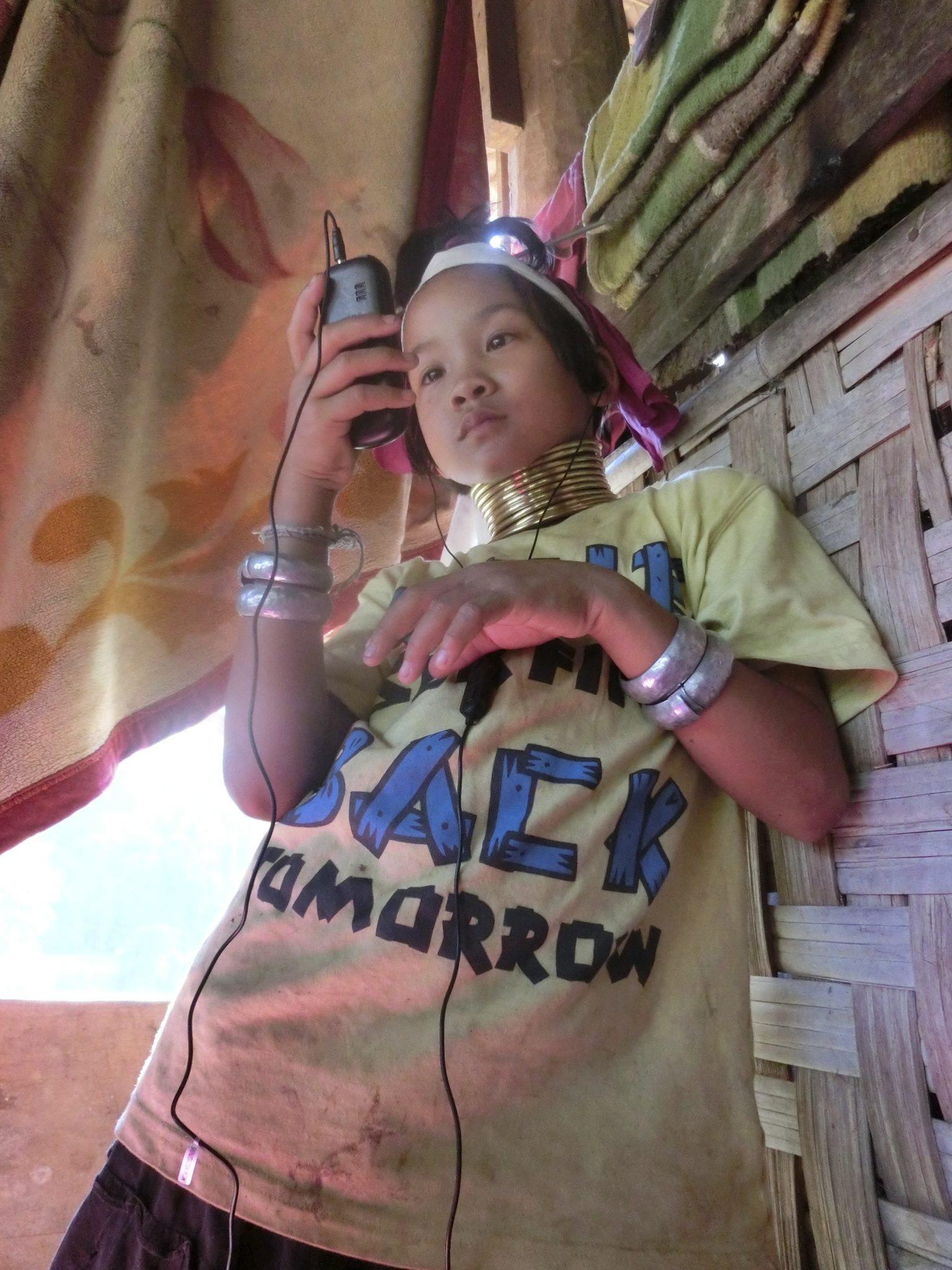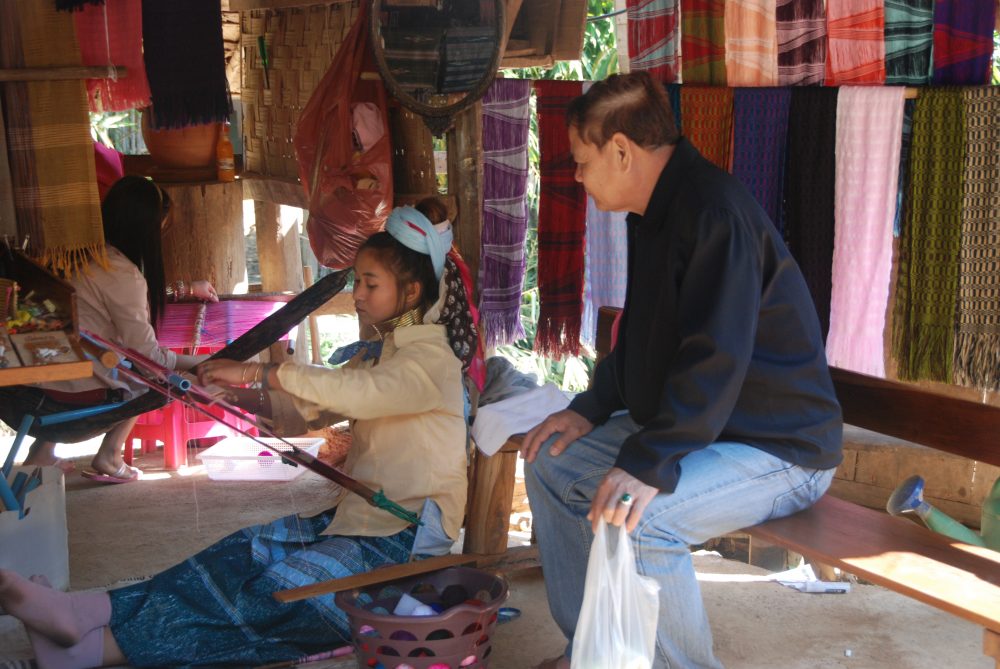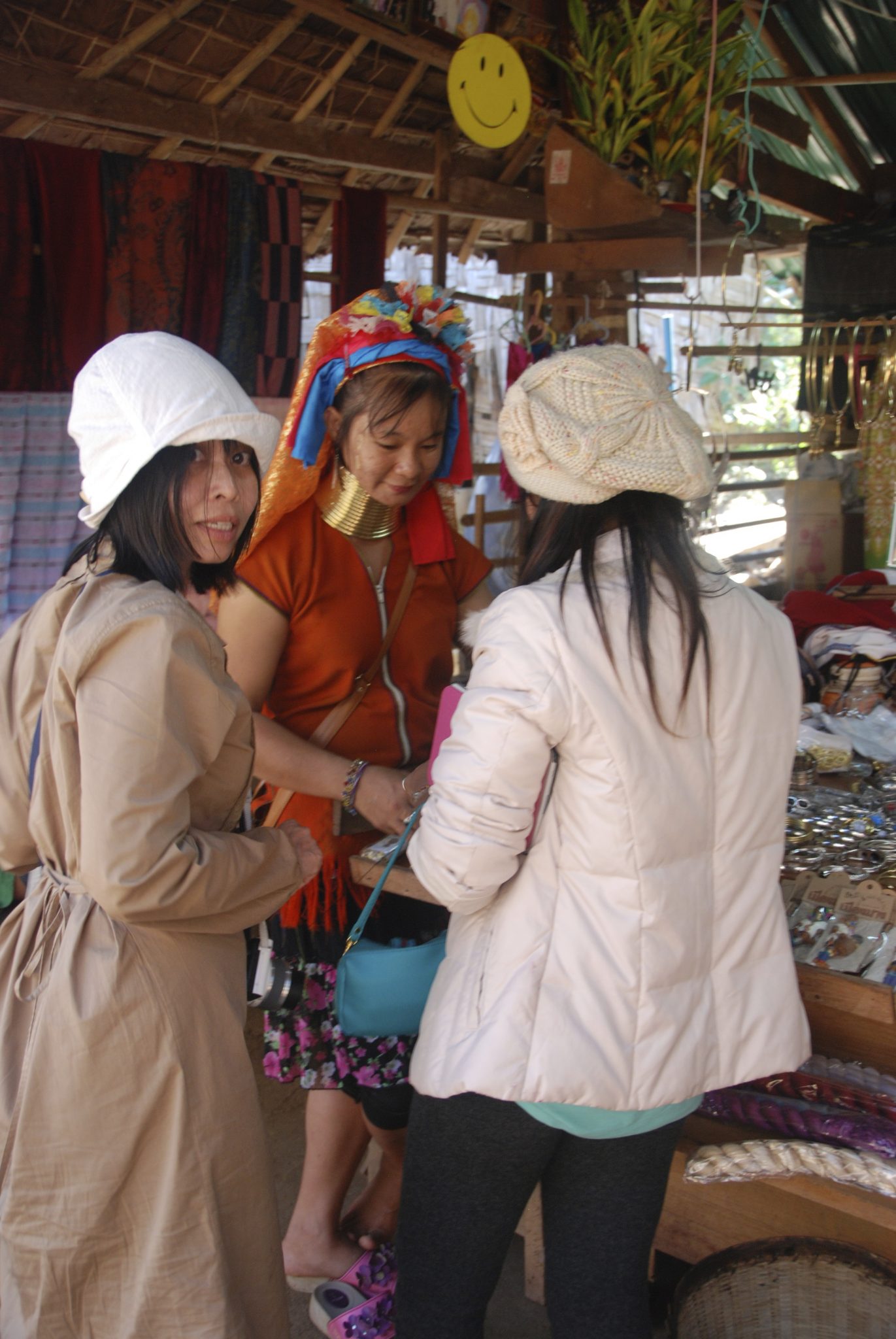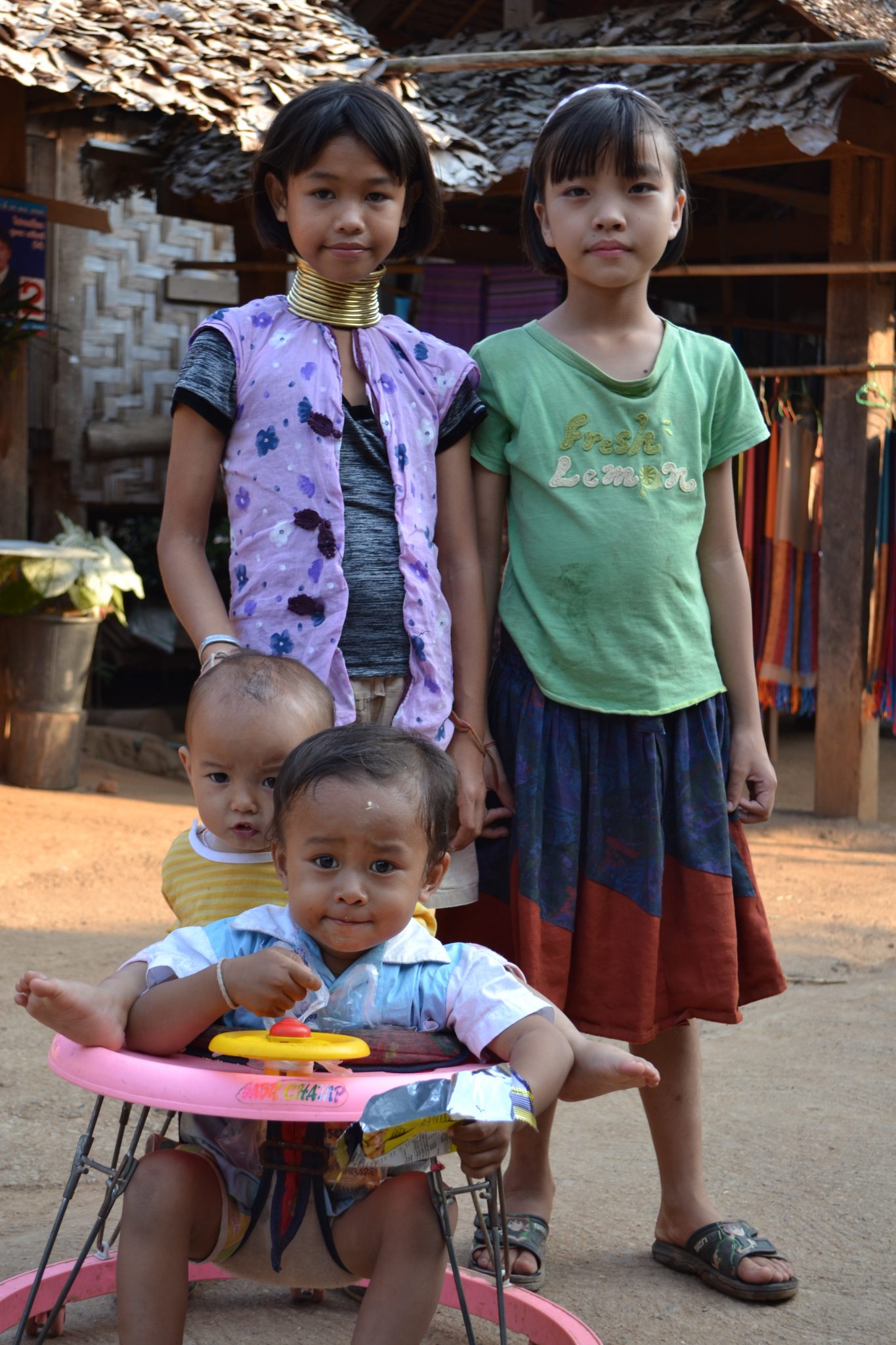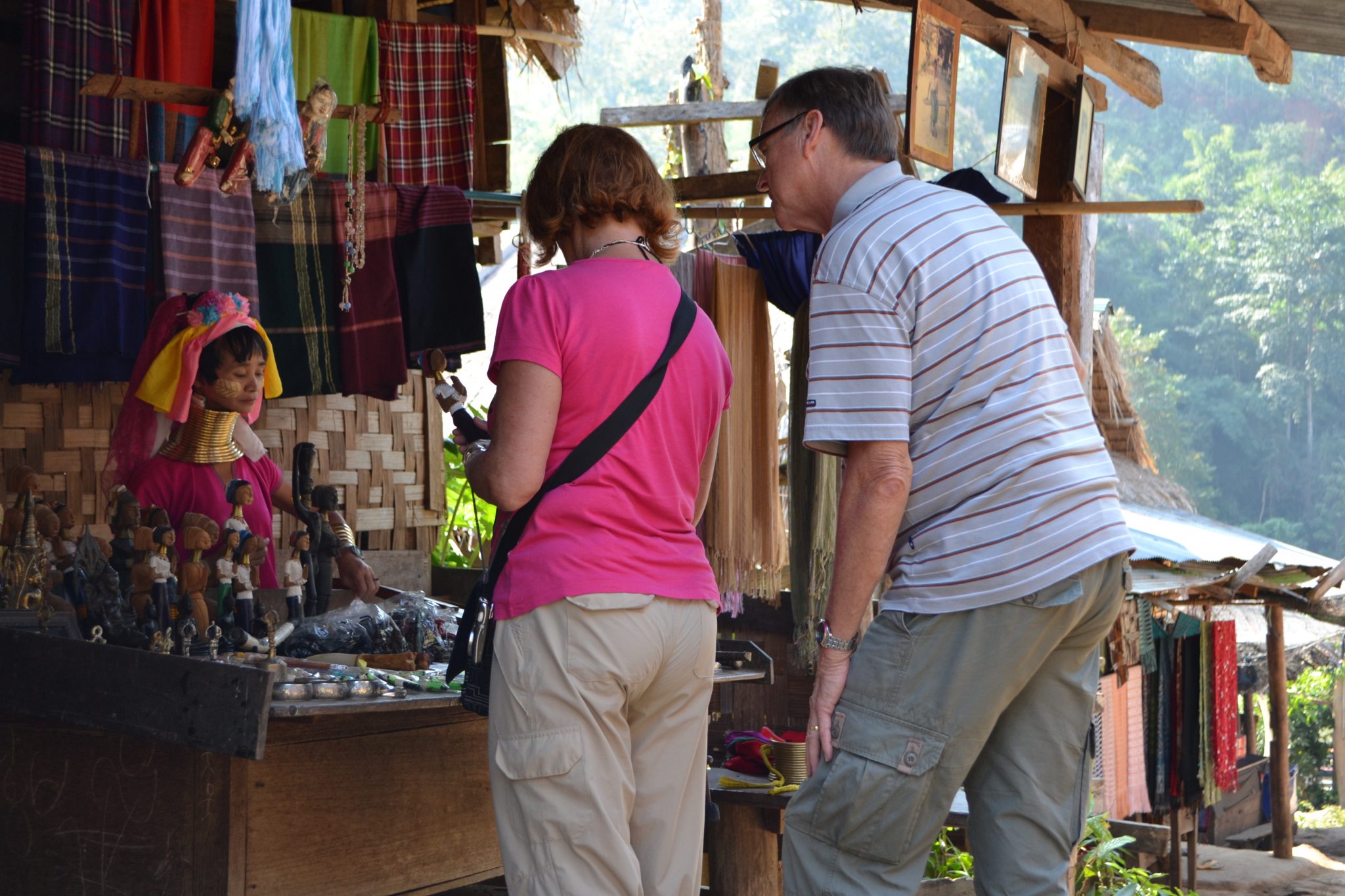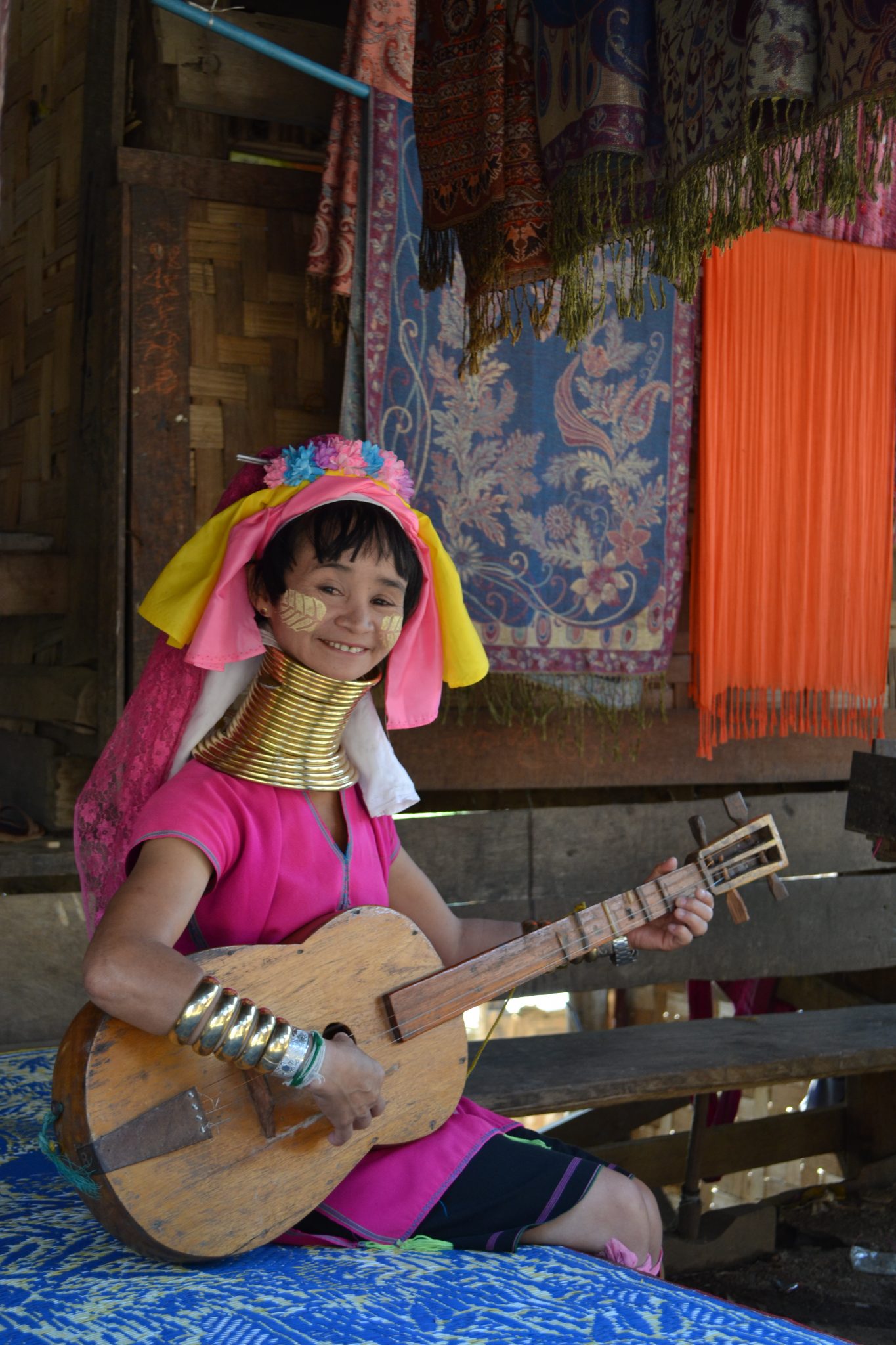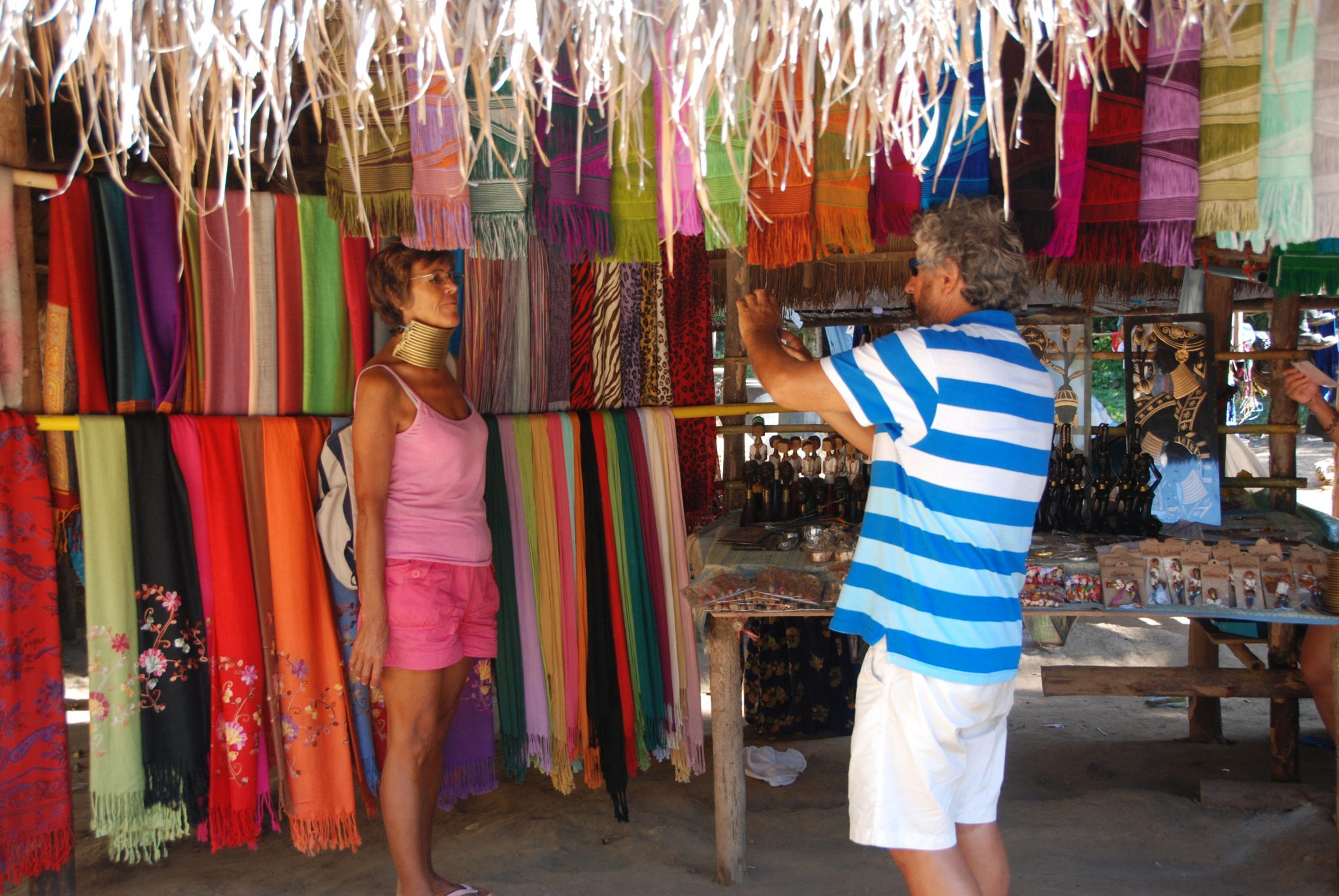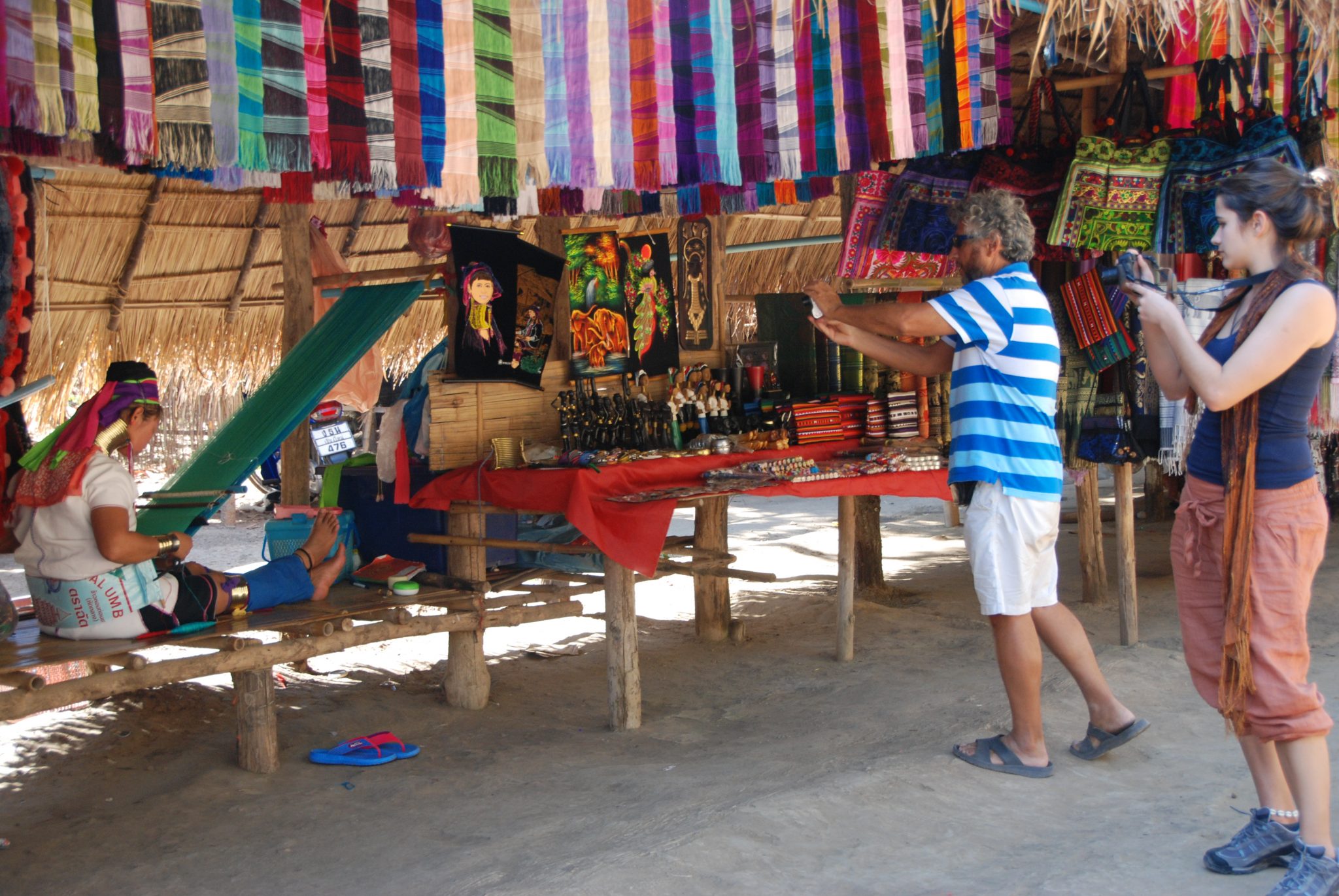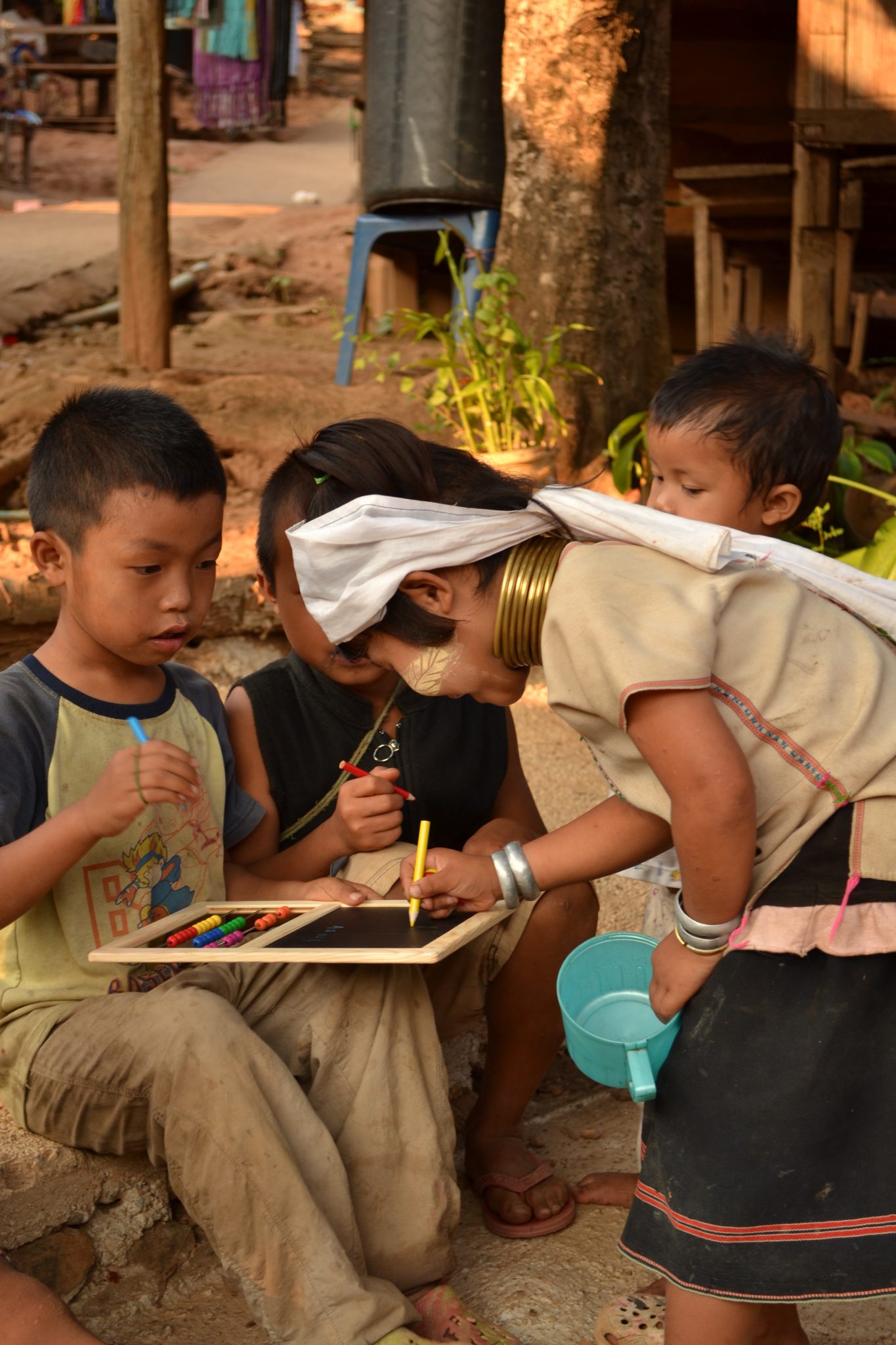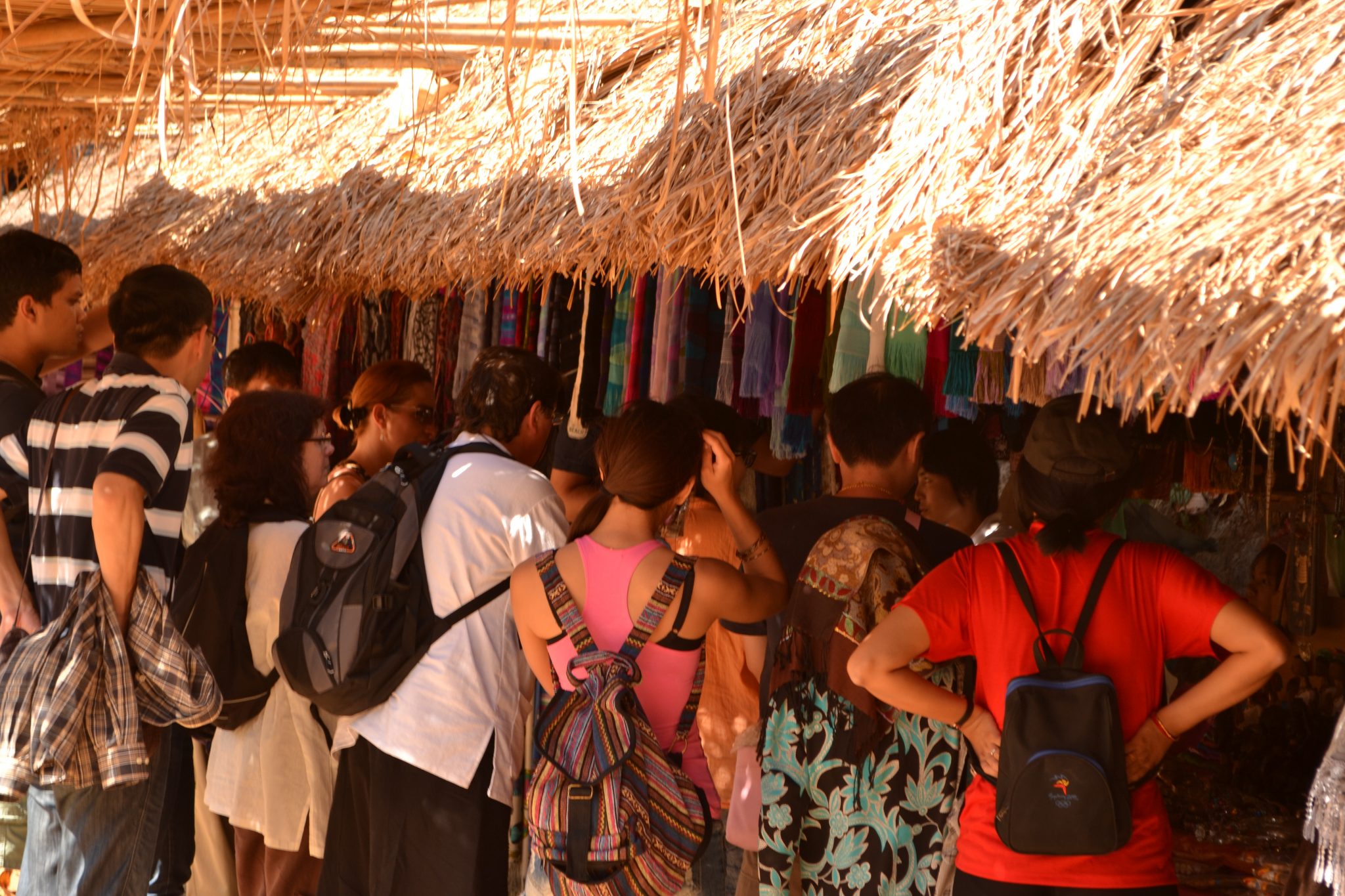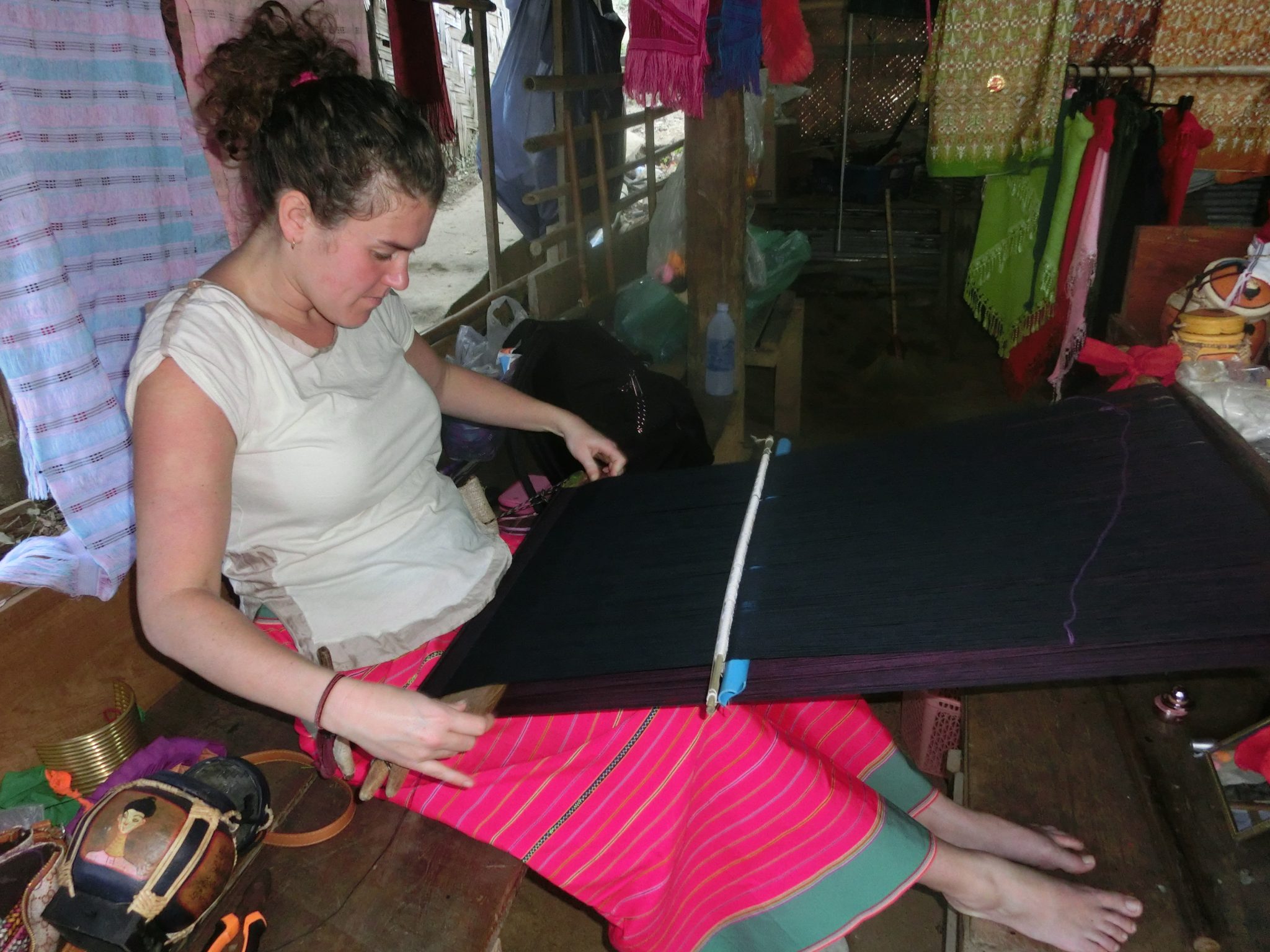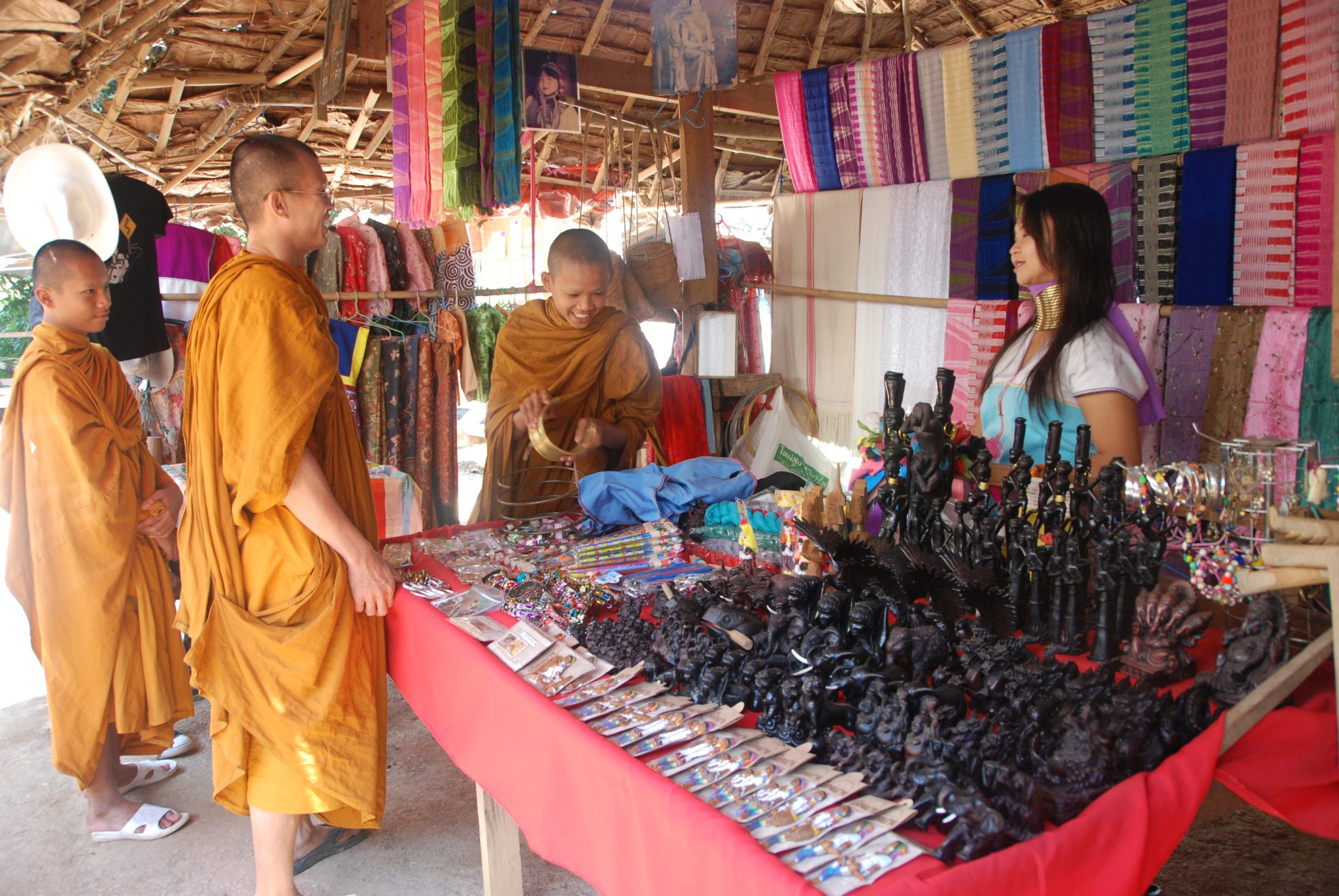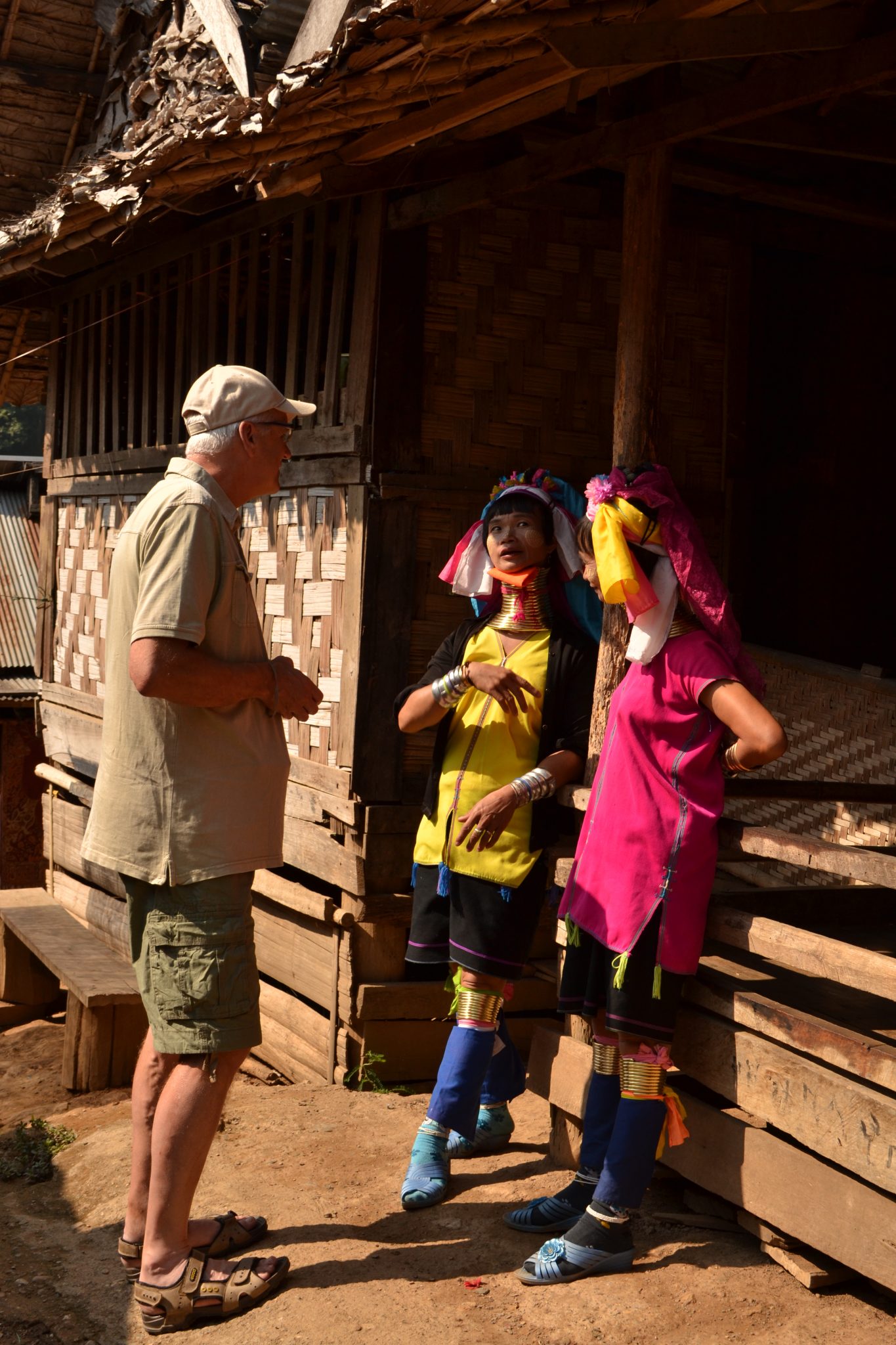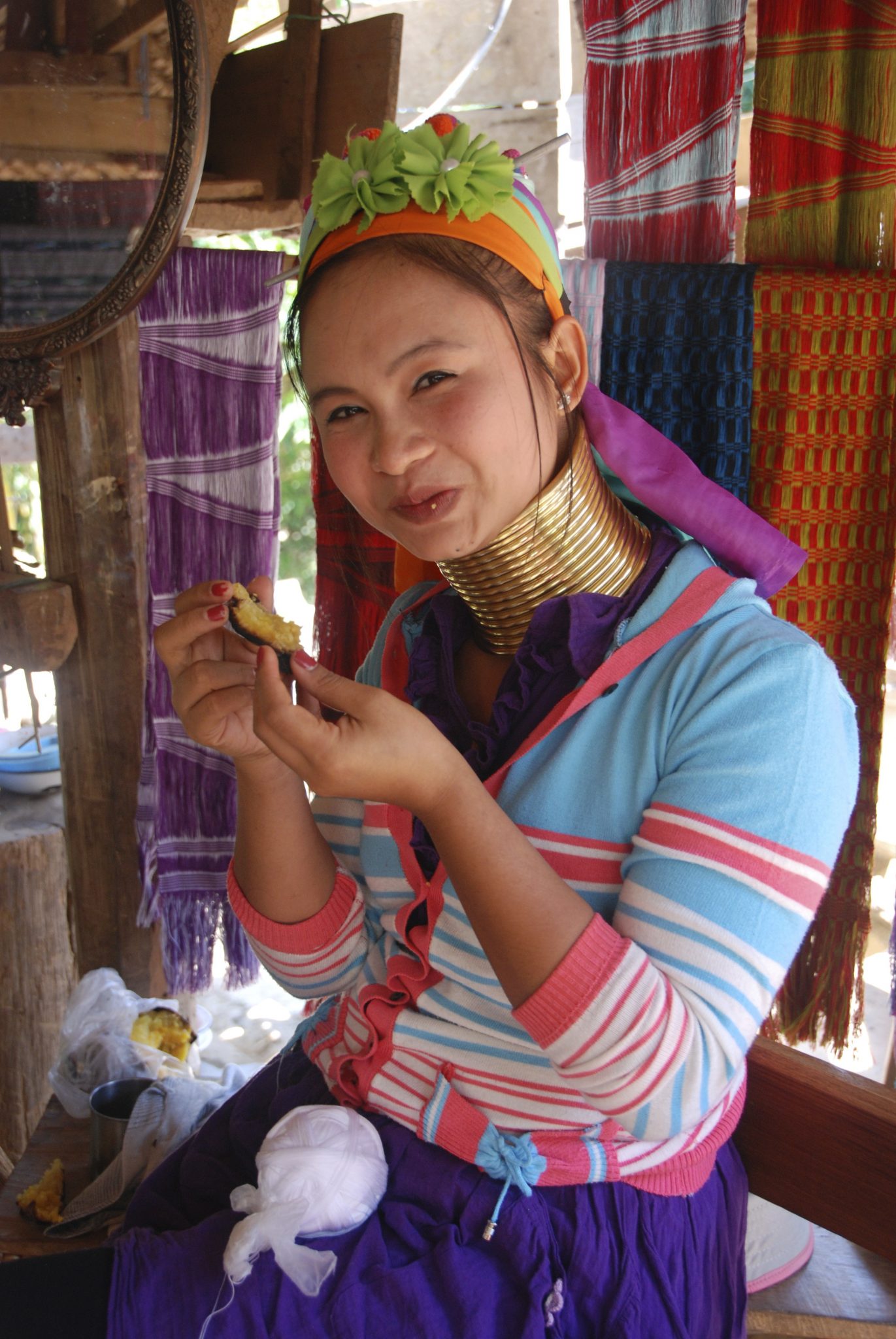We believe in tourism that relies on sustainability, cultural diversities, and respect for each other. We are keen on making travelers enthusiastic about visiting natural & cultural wonders, while engaging with the locals at the same time. This way tourism can be a catalyst for poverty alleviation & nature protection, while travelers have the best time of their lives! What are you waiting for? Take a look at our website and get involved!
Since the independence of the country of Myanmar from the United Kingdom in 1948, many sub-ethnic groups living there fled to neighboring countries due to the political tensions present at that time in the country. A large part of the Kayan, originally from Myanmar who are known for their traditional brass rings around their necks, settled in Northern Thailand. There, the Thai government considered them as possible tourist attractions, hence as a profitable source, which mainly consisted in giving the opportunity to tourists to take pictures of them. As a consequence of this, human rights movements against this exploitation rose, and aimed at promoting a type of tourism which is based on sharing the values of the Kayan, their customs and traditions, shifting the type of tourism from a vertical to a more horizontal approach. This is known as Community-Based Tourism, or CBT for short. However, although now there is the possibility to develop and to assure more independence to the Kayan in Huay Pu Keng, the number of visitors is limited. A reason why not that many tourists go there could be explained by the lack of knowledge in the existence of Huay Pu Keng, which compared to the other ones, is a sustainable, fair and culturally aware village of Kayan. As a consequence of this lack of knowledge, the villagers do not earn enough profit to make a living. In addition, lies are also spread about the rings of the Kayan. One example is that the rings would supposedly serve as protection against tiger bites, which is not true!
Contents
What is Community-based Tourism?
Community-Based Tourism, also simply referred to as CBT, is a more sustainable and culturally aware tourism industry. The tourism package also consists of involving the community in an interactive way between the tourists and the community, so that tourists have the opportunity to become culturally aware of their customs and traditions. These people are often part of a marginalized and poor population living in rural areas.
Why Community-Based Tourism in Huay Pu Keng?
In Huay Pu Keng, the community consists of Kayan, an ethnic group who escaped from Myanmar in the second half of the 20th century and fled, in part, to Northern Thailand. Here there are two different communities, the most known show villages in which tourists come to only take pictures of the Kayan, while the second is the one that has been established in Huay Pu Keng, which adopts Community-Based Tourism.
In this case, the village of Huay Pu Keng which is found in Northern Thailand, offers Community-Based Tourism which aims at protecting nature and in providing the community with an equal and fair treatment, by giving them an equitable income and keeping their dignity as human beings.
Take a look at the leaflet below for a more concise explanation of what is being done in Huay Pu Keng and who Fair Tourism is
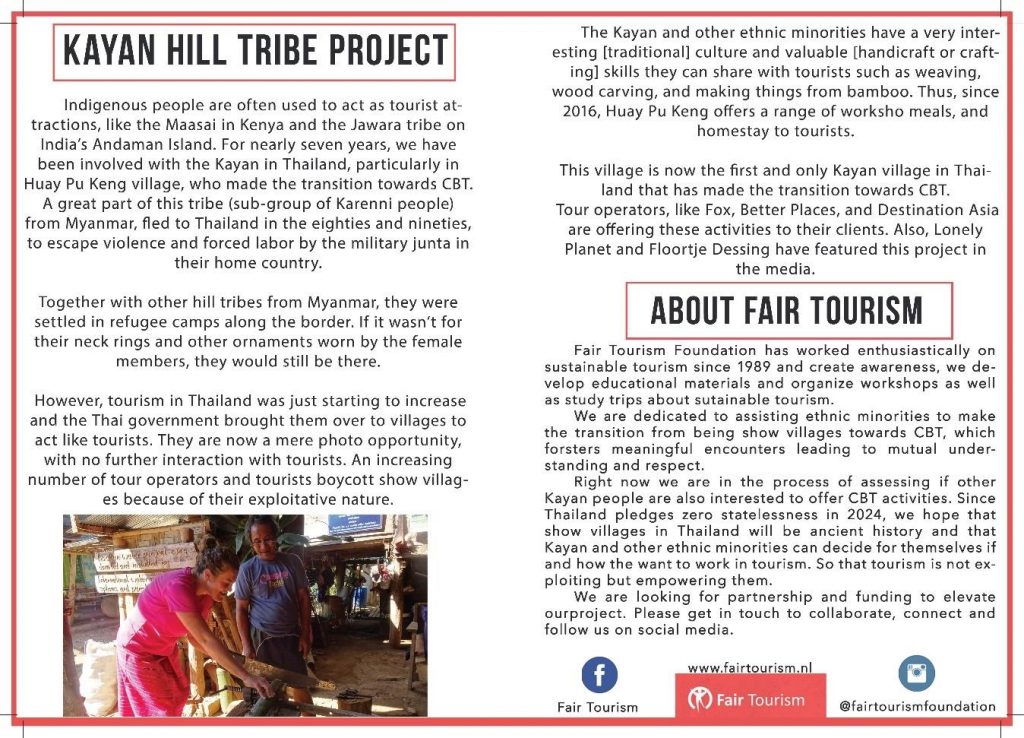 The Community-Based Tourism Team of Huay Pu Keng
The Community-Based Tourism Team of Huay Pu Keng
The Community-Based Tourism team of Huay Pu Keng meets with the villagers every month to assess who wants to work in tourism and in what way. They discuss what is going well, what needs to change and if there are any new projects to include. This team for instance consists of representatives of the various workshops:
- Noung: village chief
- Aye Muang: bookings and overall organization
- Pay Yu: organization and homestays
- Maung Htan: bamboo cup workshops
- Nyaw La: bracelet making workshops
- Ma Pang: weaving workshops
- Luka: Nature conservation
If you would like to read more about Community-Based Tourism, here are some useful handbooks:
Indigenous People and the Travel Industry: Practical Global Guidelines to Good Practice
Community-based tourism partnerships: Handbook for tour operators
Fresh From the Field: Practical experiences developing and marketing community based cultural tourism in Kayah, Myanmar through tourism supply chains.
Webinars on Community-Based Tourism:
CBI Market information on community based tourism
CBI webinar ‘Product Development in CBT – Inspiring Practices from around the world’
CBI webinar ‘How to start developing your tourism product?’
Our Goal
Charlotte Louwman-Vogels (Founder and director of Fair Tourism): “My dream would be that communities that feel oppressed and exploited by tourism, find Fair Tourism and contact us, so we can assess the situation with them and give tourism back to them, so tourism is no longer exploiting, but empowering them.”
Our goal is to get more people to experience all the great things that Huay Pu Keng and its surroundings have to offer, because if the Community-Based Tourism model works well in Huay Pu Keng, then more hill tribe villages could implement it. That would mean that the residents of those villages no longer have to be exploited through tourism, but they can make a decent income centered around their skillset.
The Destination
What is there to do?
Workshops
There are various workshops on offer in Huay Pu Keng. A local resident will show you how skillful they are in their craft and teach you how to do it. You will be creating something that is traditionally Kayan, in a traditional way. In the end, you can of course take your self-made product back home with you as a memory of the trip. Take a look at the leaflet below for more information about the various workshops that are available, the costs and how long they take.
Meals are not provided during the workshops, but the residents are more than happy to prepare a traditional meal for you for only 100 baht (€2,80).
“We have done a workshop making a bracelet during our visit to Huay Pu Keng. During this workshop you really connect to the people living there. They are open for contact and love to talk about their daily life. (…) After the workshop we had a delicious local lunch. For a real and local experience I really recommend one of the workshops!” – Jasmijn Grundel (former employee at Better Places)
If you are interested in following one or multiple of these workshops, you can arrange this by contacting one of the local people, the information is at the bottom of the webpage. Otherwise you can contact one of the following tour operators:
Better Places
Footprint Travel
Fox Reizen
Sawadee Reizen
Shoestring
Low Season Traveller
Sacred Site
In Huay Pu Keng there is a sacred site where the Kayan celebrate their new year. The festivities last for three days and include a diverse range of activities. According to resident Pay Yu, the highlights are the “music and dance celebration, and sportive competitions, like football and volleyball. It’s based on animism, reflecting the World’s creation by their own god, through a pole planted in the soil. Every year, we erect a symbolic decorated stem and celebrate around it for luck and good health. There are more than 400.000 Kayan people in the world and during Poi Ton Tee, we all celebrate. Tourists are very welcome to join us.”
Nearby Attractions
Huay Pu Keng is located in the region of Mae Hong Son, which is rich in attractions ranging from natural to cultural interests. Here you will find a list of the most loved touristic sites, which vary from isolated to crowded locations, depending on your preferences.
Nature attractions
Jungle and river Pai: If you are looking for a very local and adventurous experience, accommodating in an isolated village with guest houses, you can hike in Chiang Mai and fish in Pai river. Due to its isolated location, it is a very authentic and unique experience, which can include for example hill tribe tracks
Mae Hong Son loop: Would you like to drown into the Thai nature, but do not have the physical ability to do so? You can rent a motorbike and discover the main natural characteristics of the area through the Mae Hong Son loop, which is a popular road in the region
Tham Lot Cave: Are you a lover of caves, particularly of rocks? The Tham Lot Cave is the longest cave in Thailand, which consists in a mix of a romantic and wild experience
Mae Sariang: Are you looking for a place to rest your mind, frequented mostly by backpackers? Mae Sariang is the perfect location, surrounded by an authentic experience which also includes the possibility to visit temples, hill tribes’ villages and many more.
National and protected Parks: Namtok Mae Surin National Park is a loved park which includes caves, waterfalls, and mountains. While the Pang Tong Royal Development Project is a stunning protected park in which many hill tribes are living. There are also lakes and beautiful hikes that can be done.
Cultural Attractions
Mae Hong Son Burma style temples: While Thailand has plenty of temples, the Burma temples in Mae Hong Son are particularly authentic. Due to the close border with Burma, many temples have been built there in the past. Their most attractive characteristics are the enormous Buddha in each temple and their architectural structures.
Buat Luk Khaeo Festival: This is the most colorful official celebration of the country, in which boys between 10 and 13 years old are ordained as novice monks. This colorful event occurs at the beginning of April, in conjunction with other celebrations such as Songkran and Buddhist New Year.
Wat Phra That Doi Kong Mu: This is a perfect expedition if you love both nature and the Thai culture. After half an hour trek in a forest you will arrive at a temple introduced by two lion statues, with one of the most stunning views of Mae Hong Son.
Huay Pu Keng rules and safety
Visitors have to keep in mind that Huay Pu Keng is a village and that they are guests. Therefore, they should behave accordingly. Do not throw your trash on the ground or enter someone’s house without permission. The residents are used to people visiting them and love to show you around and talk about their fascinating culture, but do not cross the line and start touching people or asking very rude, personal questions. Treat each other with respect and as human beings.
Transportation
Address: Huay Pu Keng, Pha Bong, Mueang Mae Hong Son District, Mae Hong Son 58000, Thailand.
There are various ways to get to Huay Pu Keng, but we would like to recommend crossing the river Pai using a boat from the villagers. This costs 325 baht per person and includes the entrance fee. In addition, the money goes directly to the residents themselves, which supports CBT. This boat ride lasts for about an hour and it is a great opportunity to look at the jungle surrounding Huay Pu Keng. It is a beautiful experience!
Accommodation
There is a possibility to stay overnight in Huay Pu Keng in a homestay for 300 baht per night. There are around five homestays on offer and the residents built those themselves. There is also one little house which tourists can stay at alone that overlooks the river Pai. Food is not included, but it can be arranged. The residents love to let you experience their traditional dishes, so you only have to ask. The money earned from this goes straight into the village fund. For more information or in order to book, click here.
If you would not like to book an accommodation in advance, you can always try to arrange it when you have arrived in Huay Pu Keng. However, there is no guarantee that you will be able to stay the night, because of the limited space.
The little house in Huay Pu Keng which tourists can rent for themselves.
It is no problem if you prefer not to stay in the village. About half an hour ride away is Changwat Mae Hong Son with a diverse range of accommodations. From local farms with a nice and cozy garden, to guest houses, hostels, camping’s, boat houses, hotels and luxurious resorts with swimming pools and buffets. Therefore, there is also a variety in prices from about 7-40 euros a night depending on the season and accommodation of choice.
Food
In Huay Pu Keng it is possible to try the local Kayan food for only 100 baht (€2,80), or to participate in a workshop to learn how to make some of the traditional dishes
Meet the locals!
 Myo Khin (weaver): “We are eager to receive tourists again after the COVID Pandemic. It’s great that more tourists want to try weaving. They say to me that it looks very easy, but after they tried themselves, they understand how precise you have to be while weaving. They are proud when they weave their own hairband, with some help from me and the other weavers. It makes me very happy if they tell me that they get more respect for the work we are doing.”
Myo Khin (weaver): “We are eager to receive tourists again after the COVID Pandemic. It’s great that more tourists want to try weaving. They say to me that it looks very easy, but after they tried themselves, they understand how precise you have to be while weaving. They are proud when they weave their own hairband, with some help from me and the other weavers. It makes me very happy if they tell me that they get more respect for the work we are doing.”
Contact Information
Aye Muang:
Mobile nr: +66 93 191 2920 (poster) or +66 85 706 0537
Pay Yu (with his child)
Mobile: +66-93 305 6708
Follow us on Facebook and Instagram for regular updates
Fair Tourism:
- Email: info@fairtourism.nl
Huay Pu Keng:


